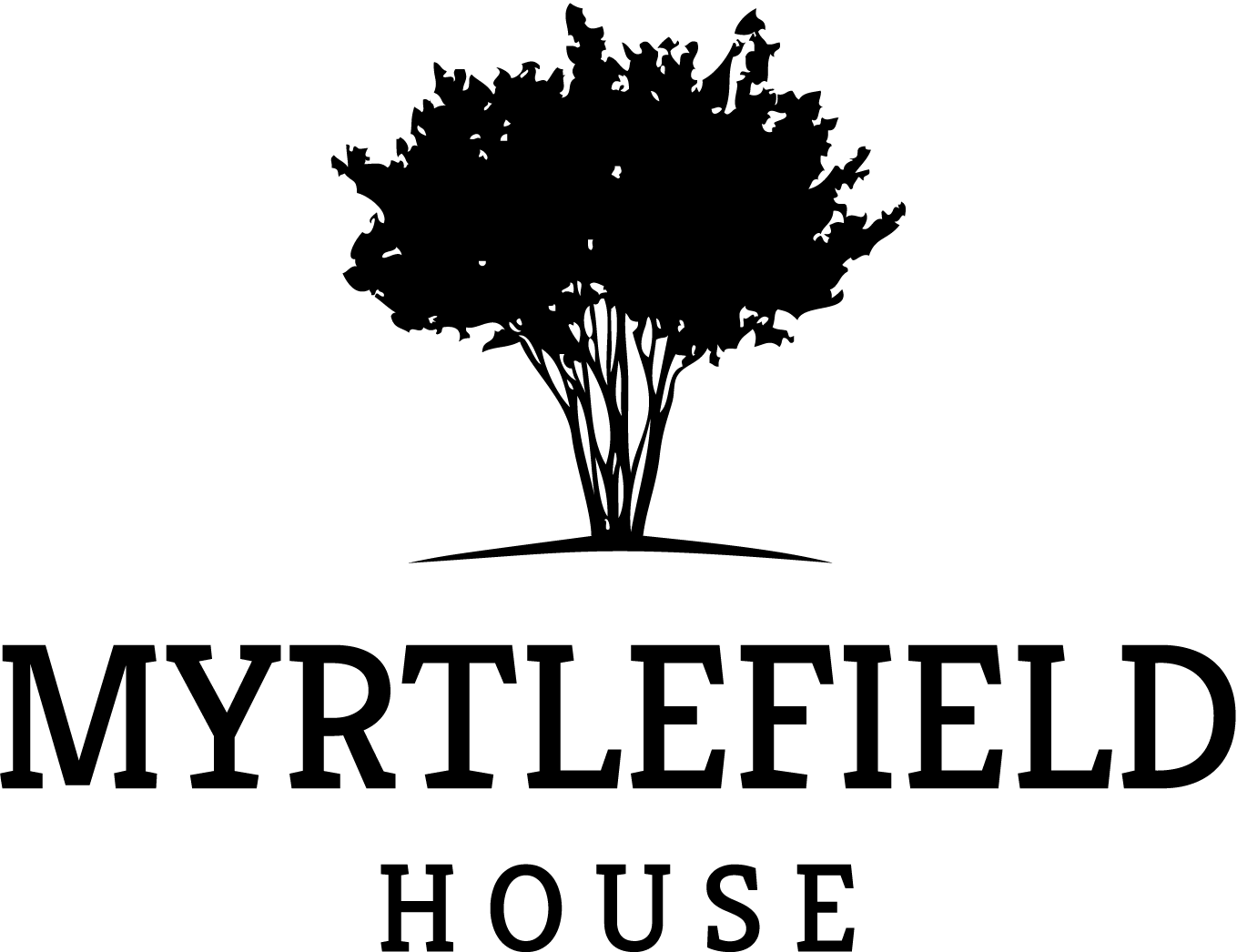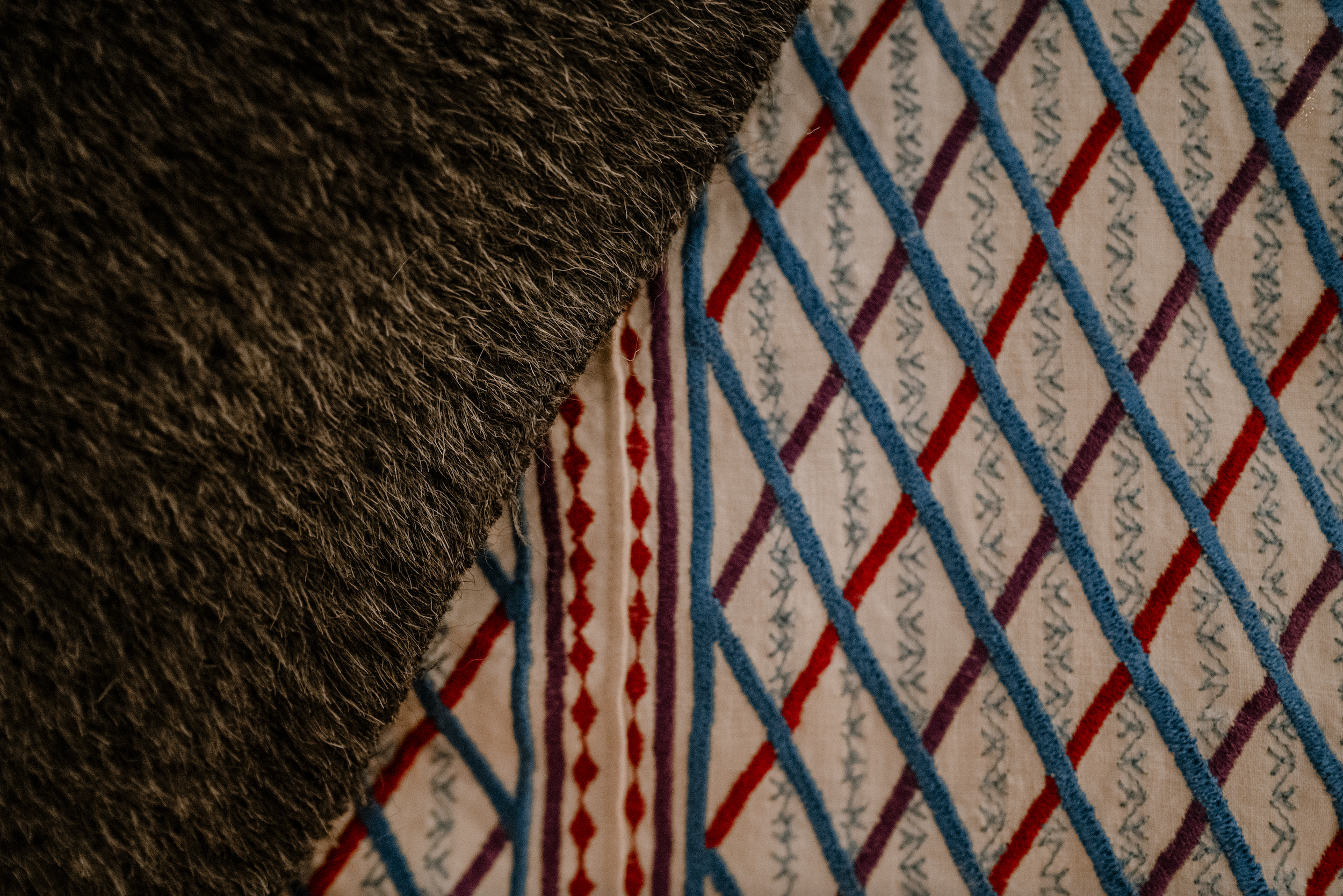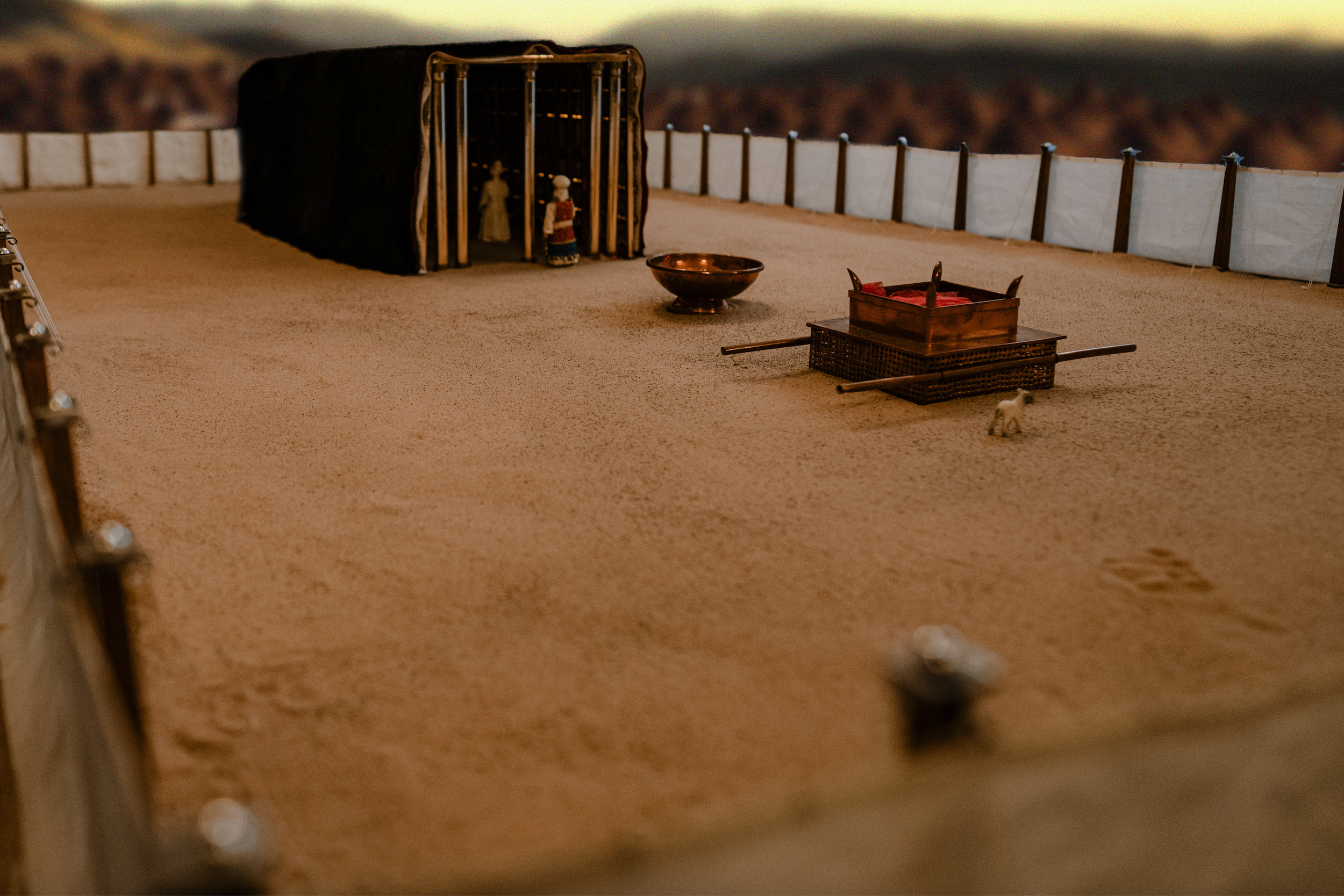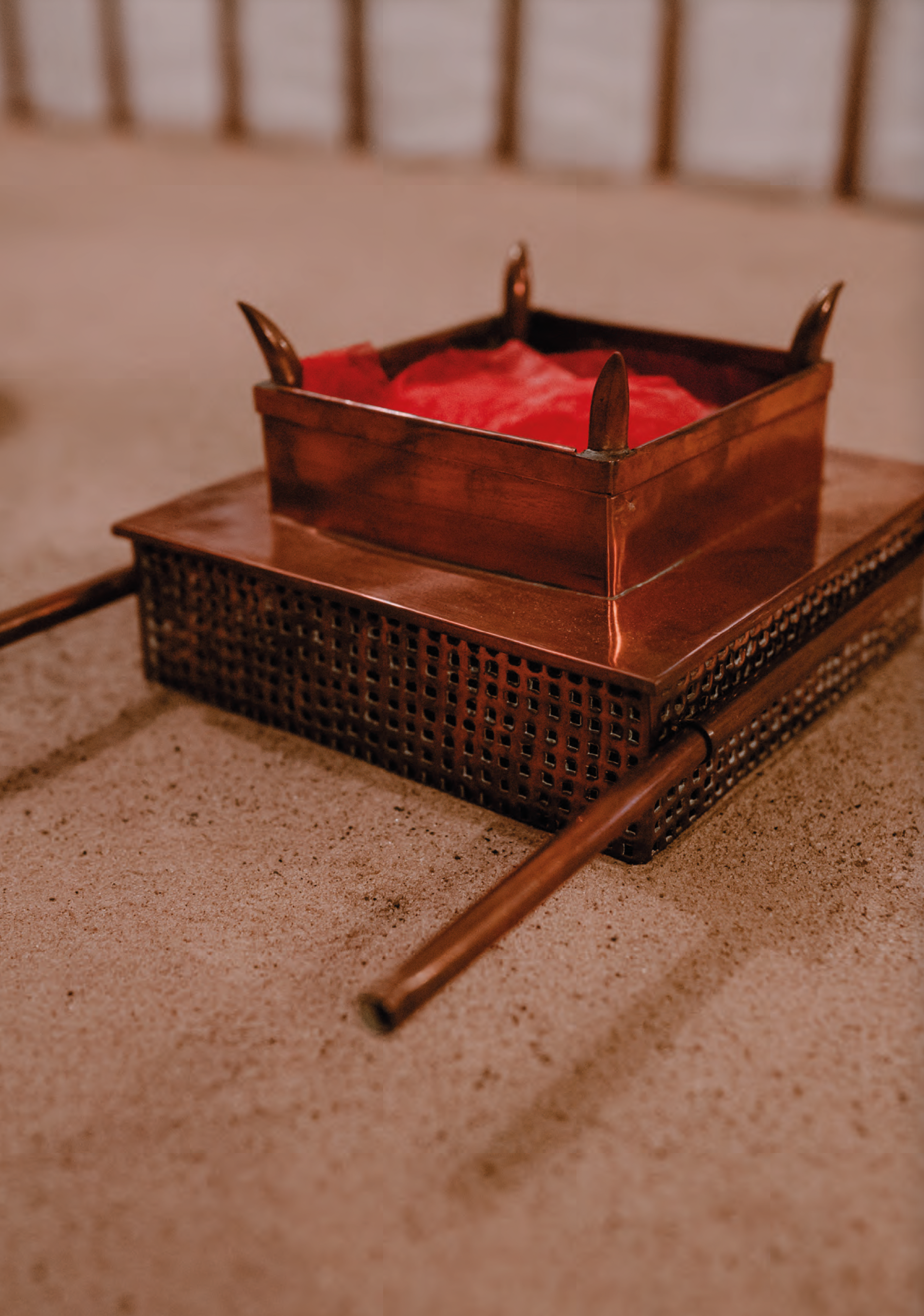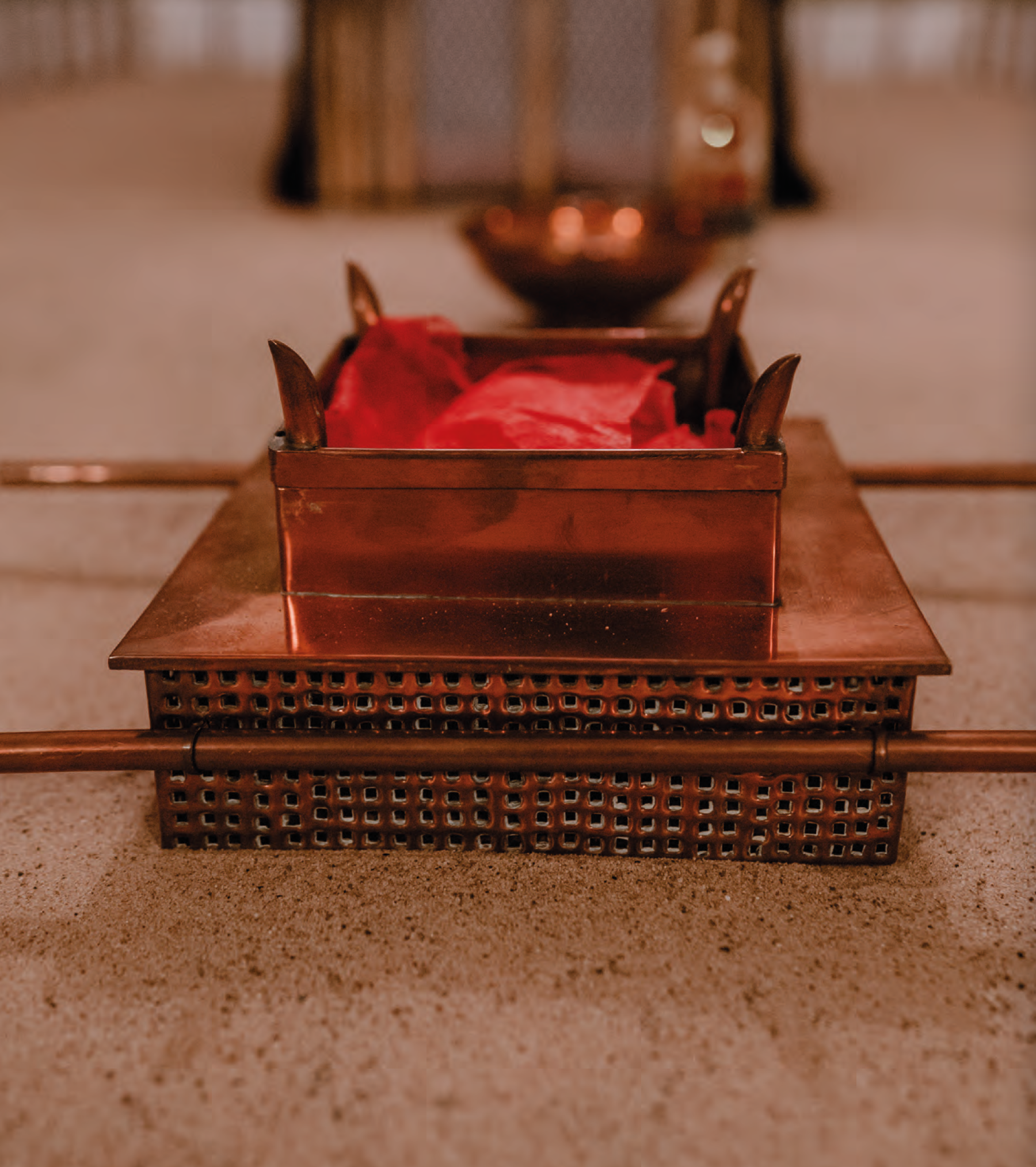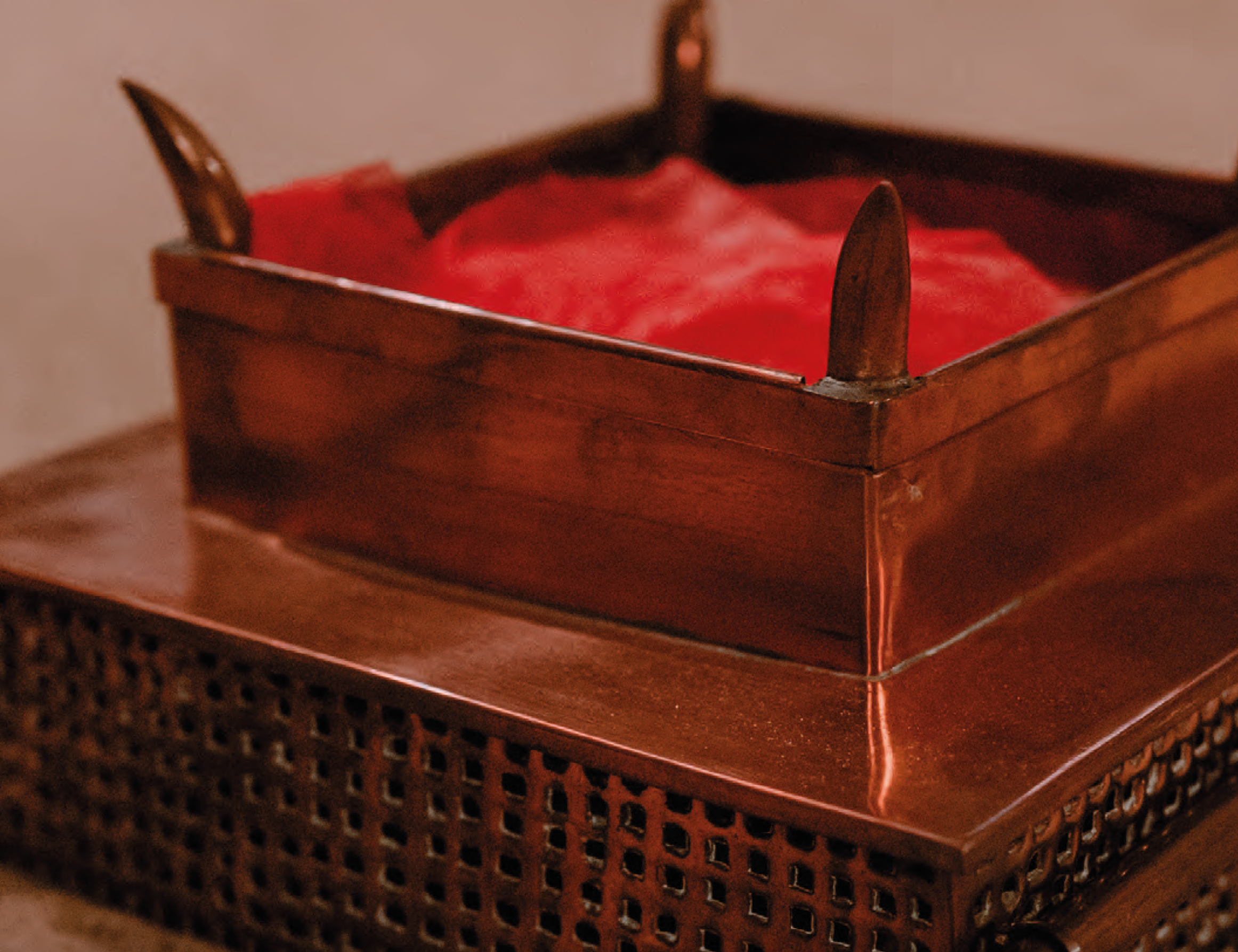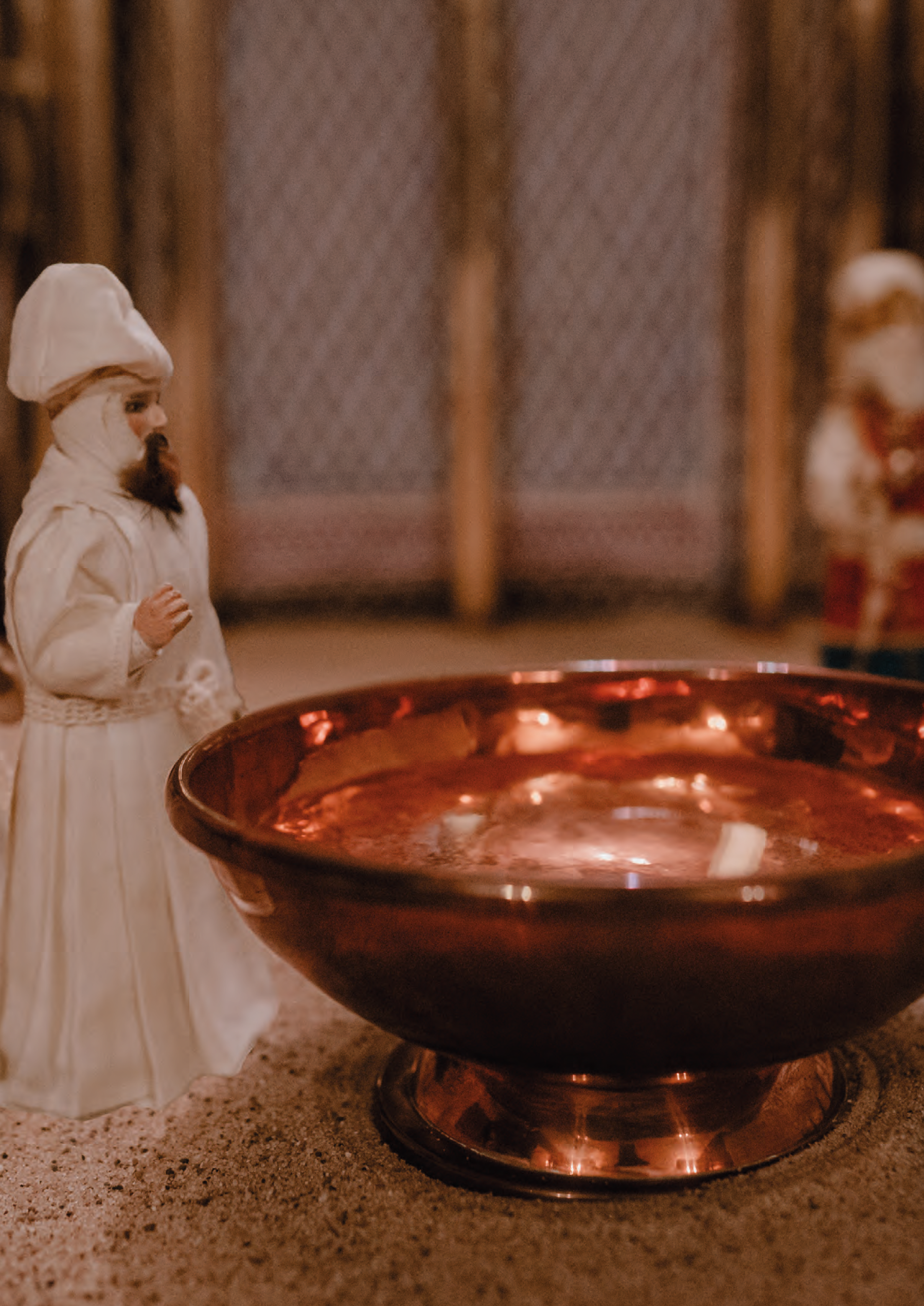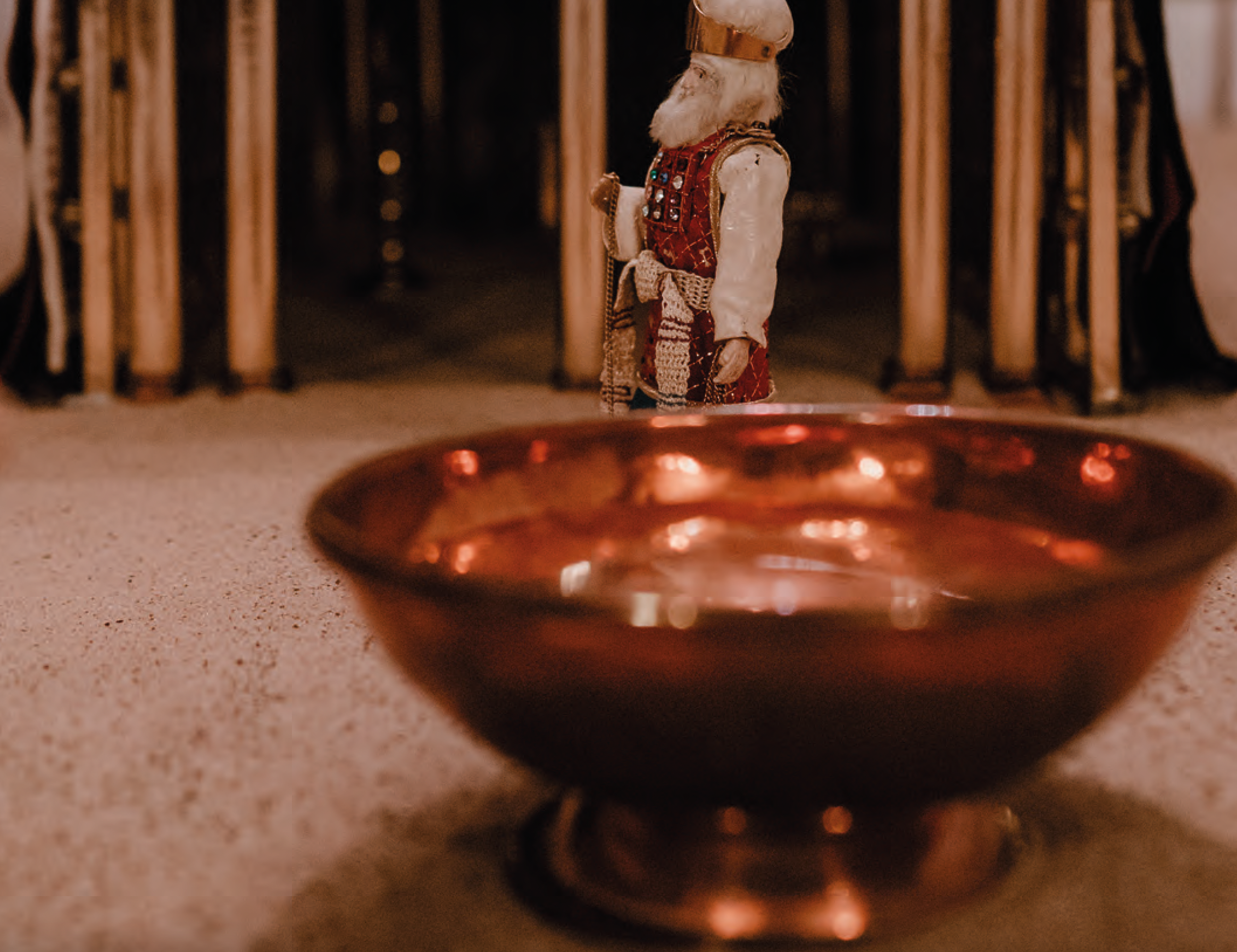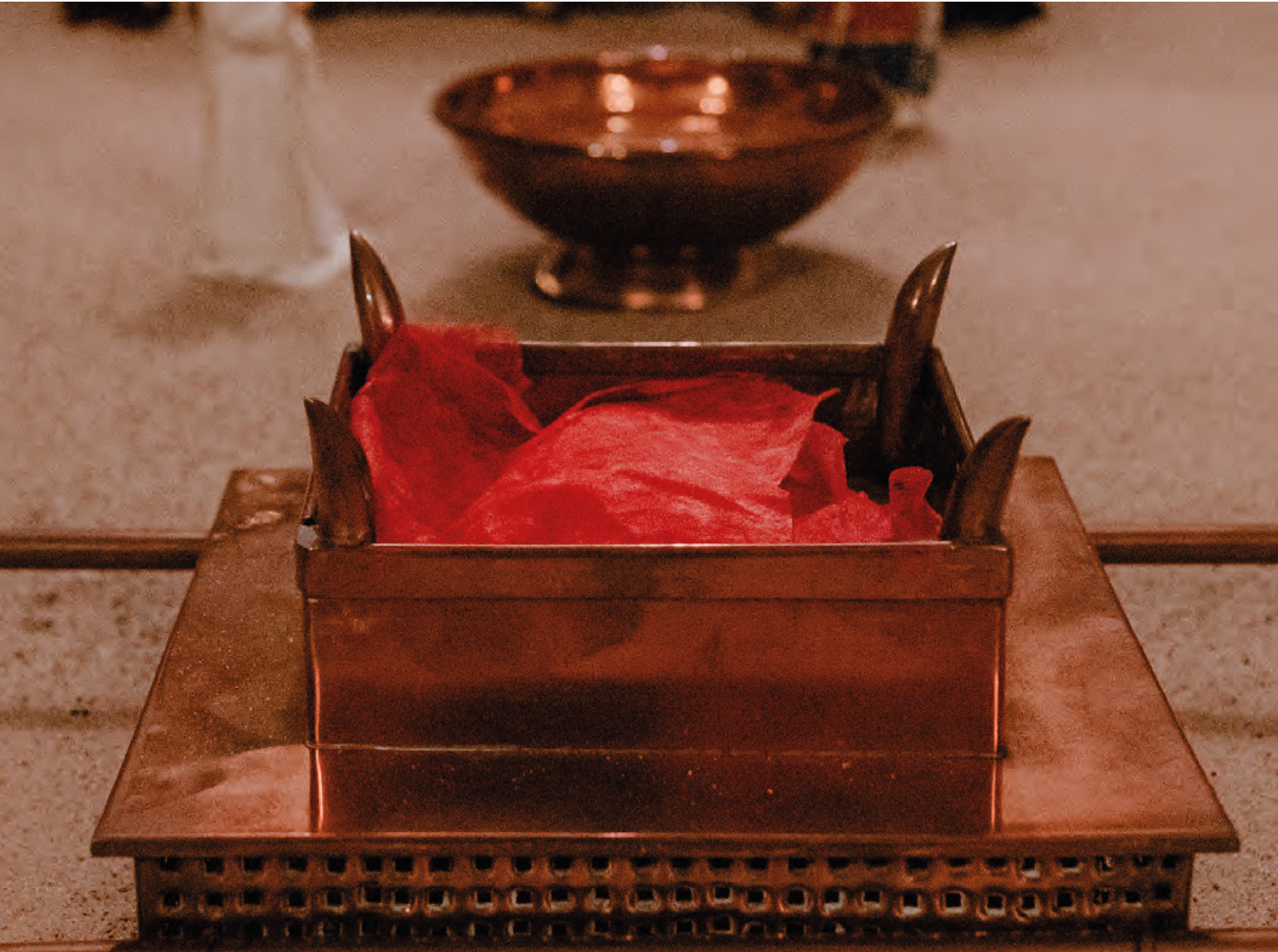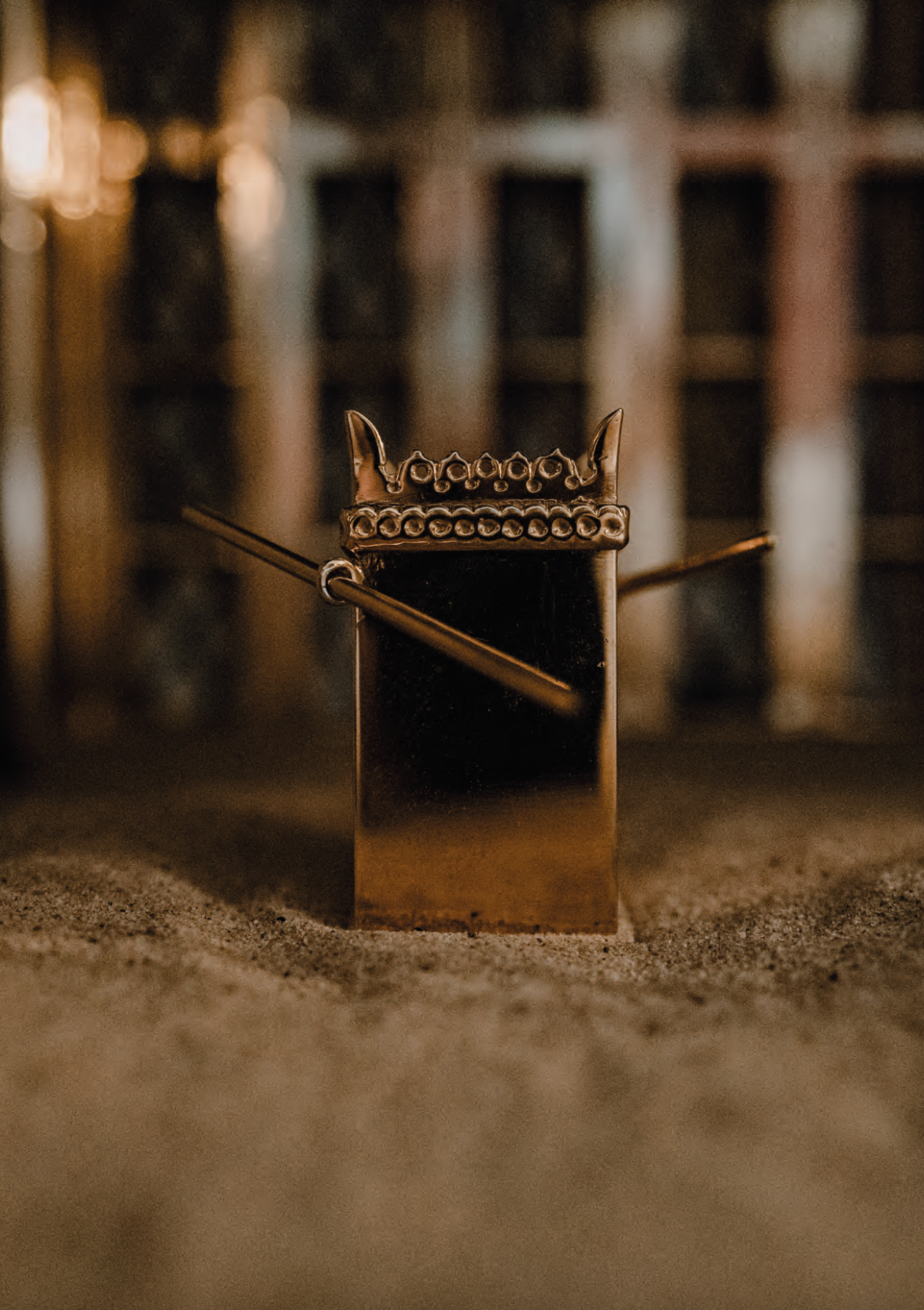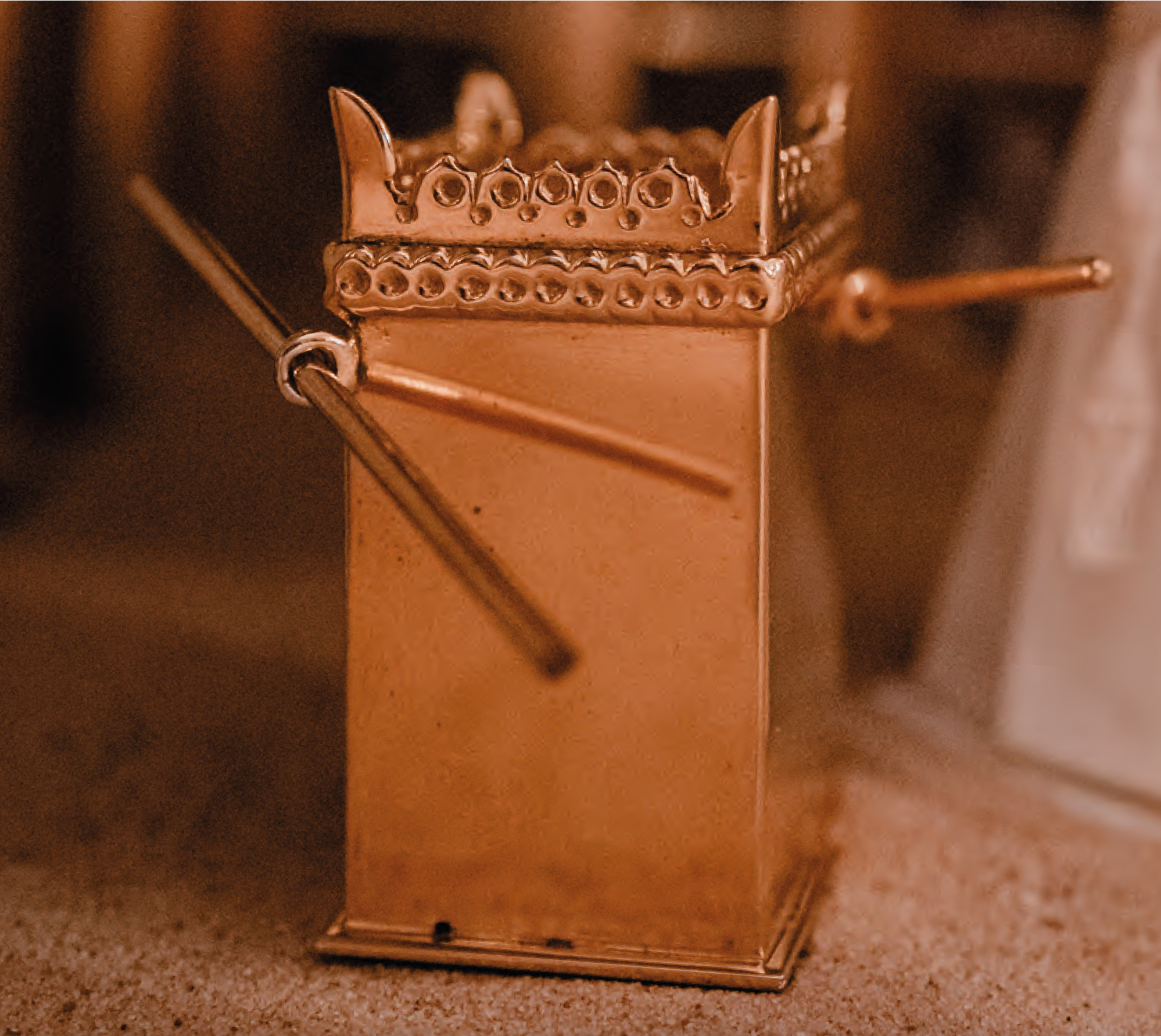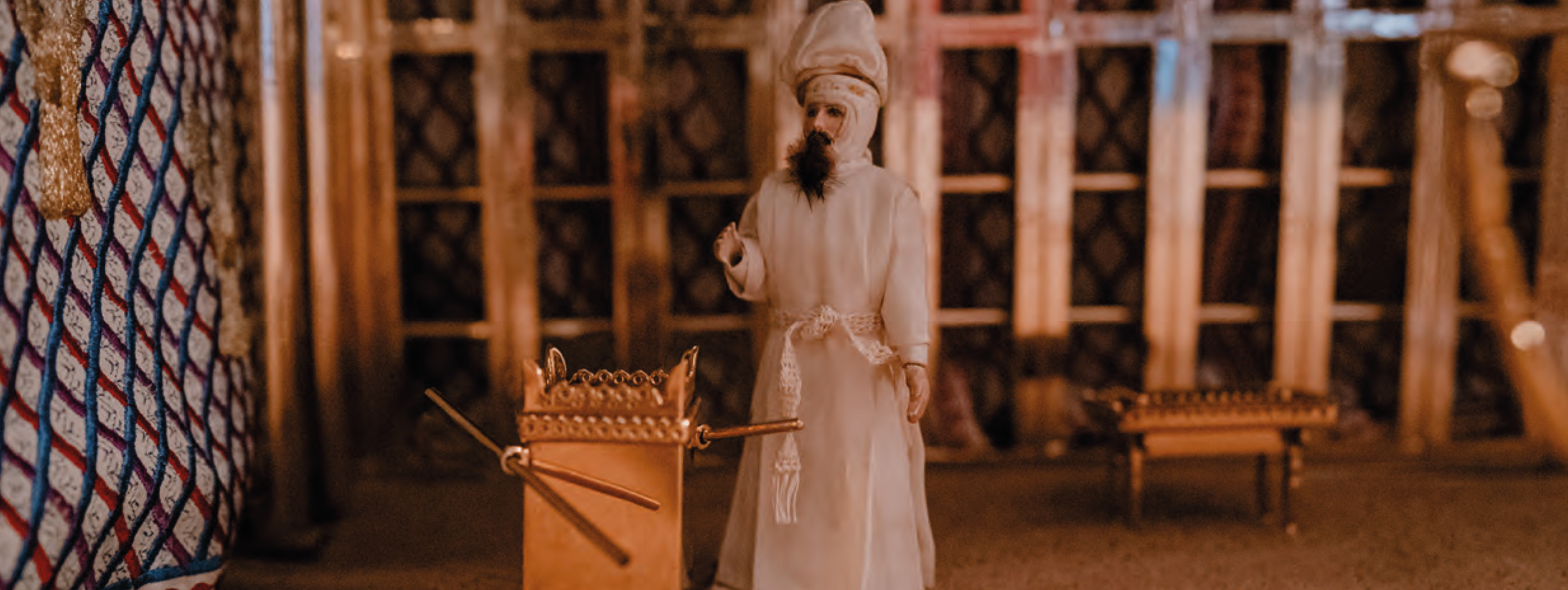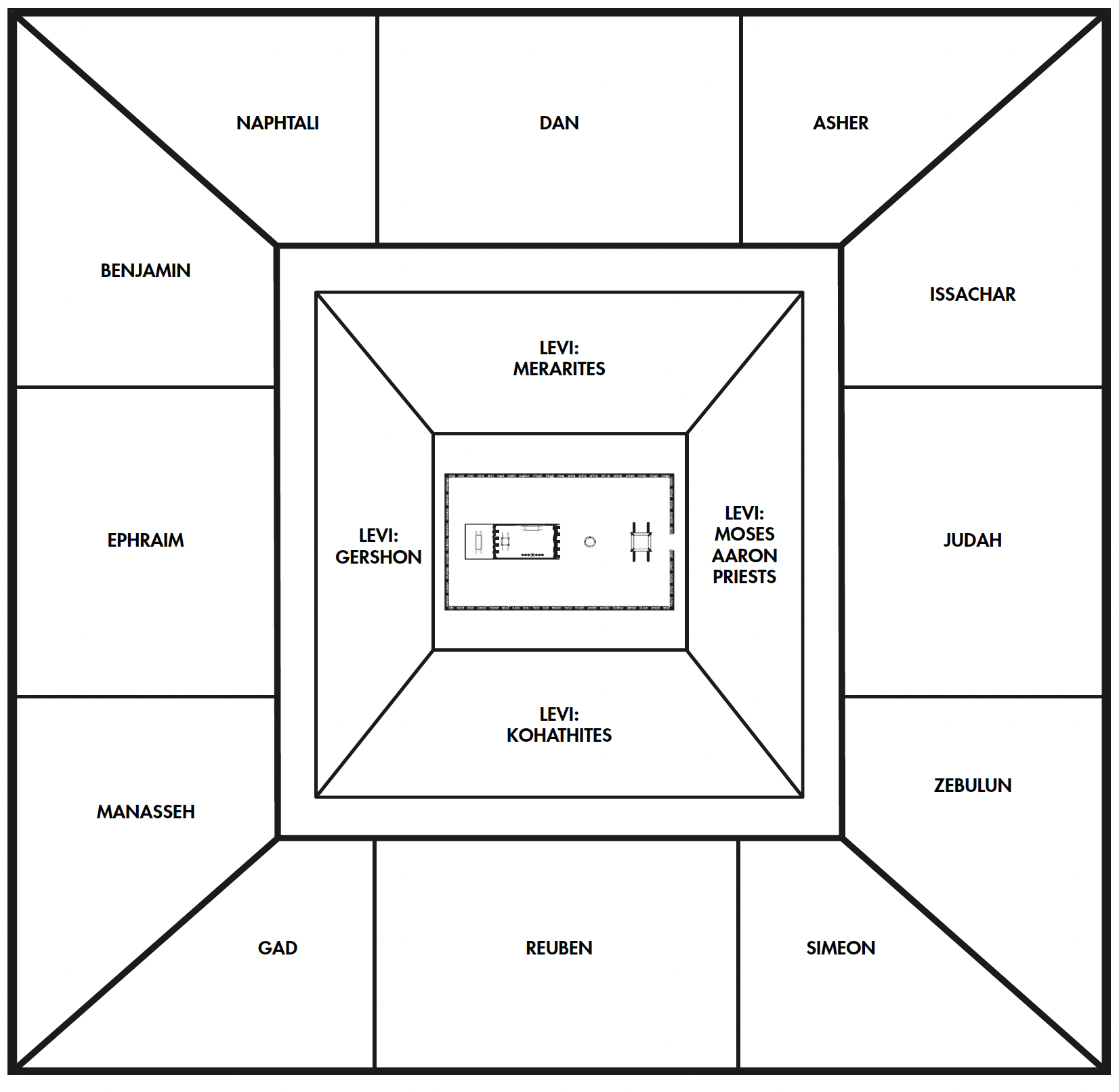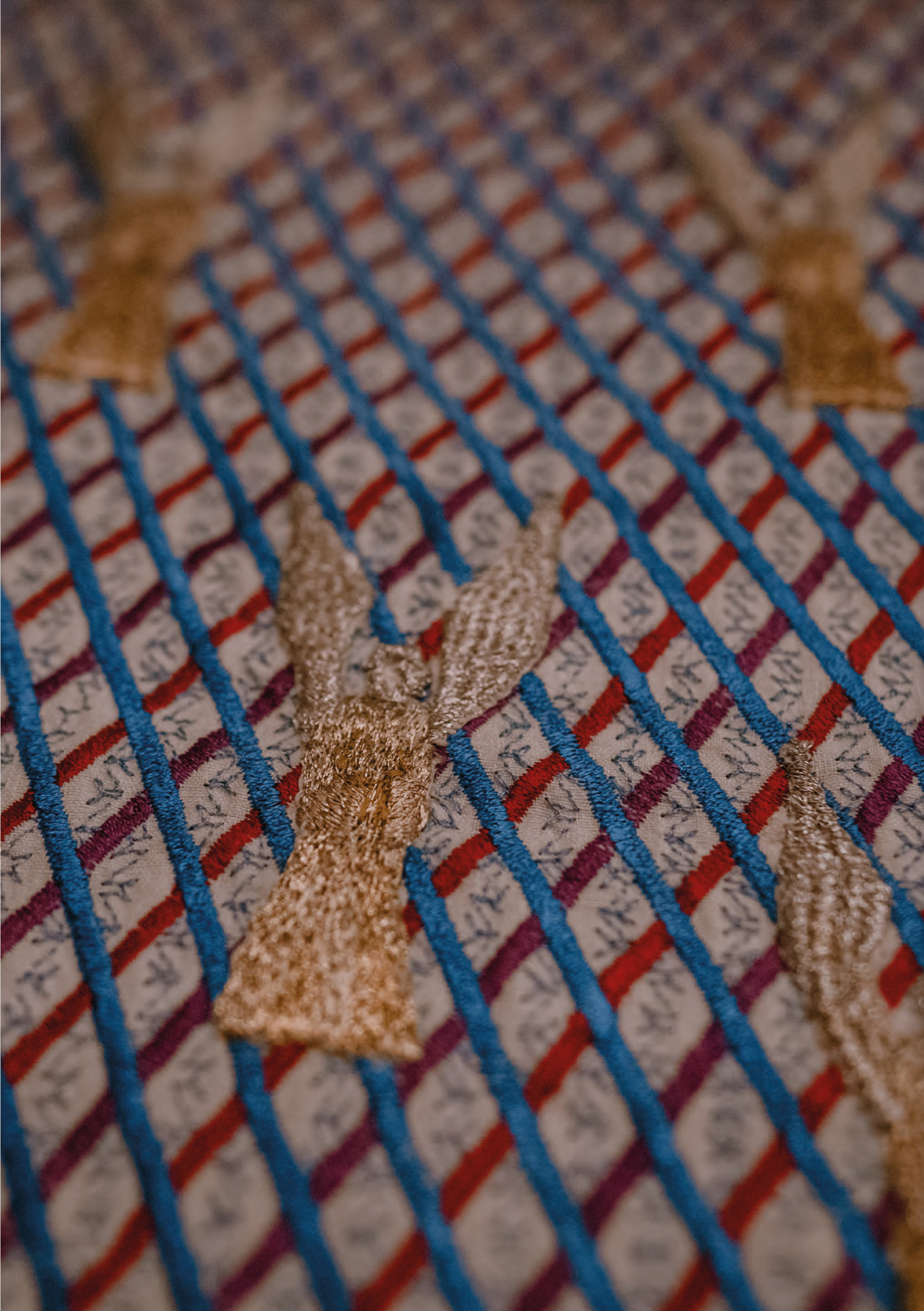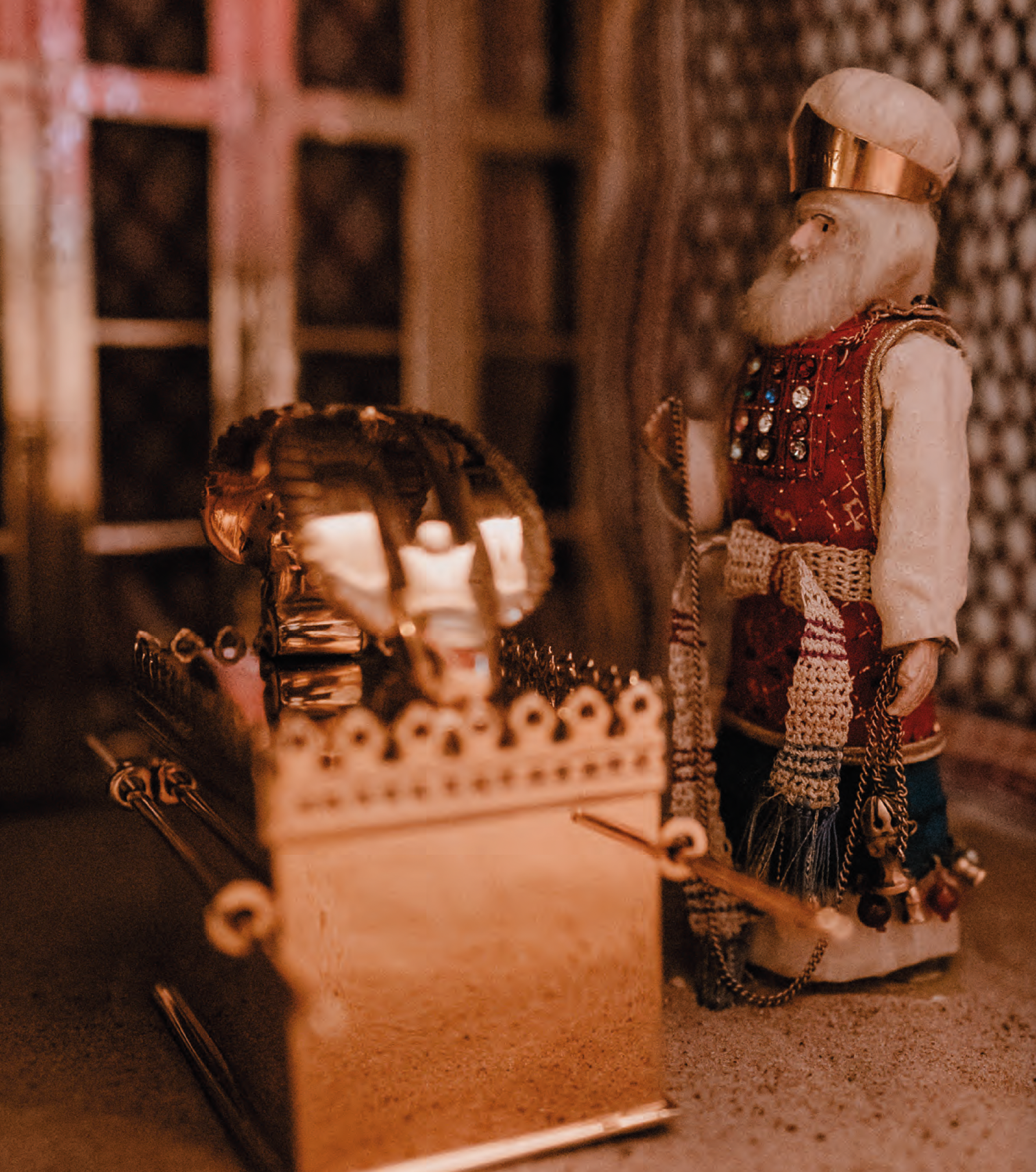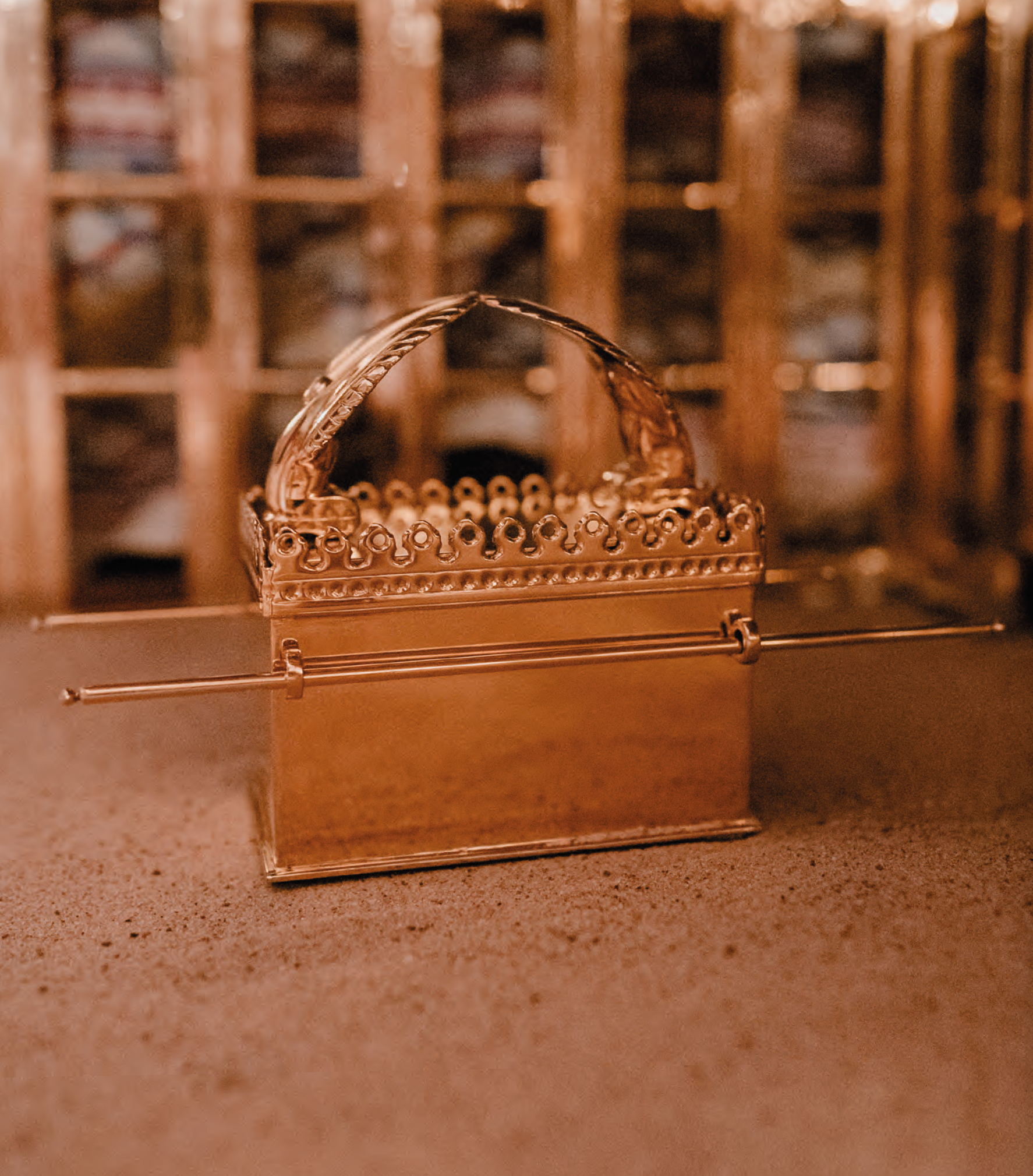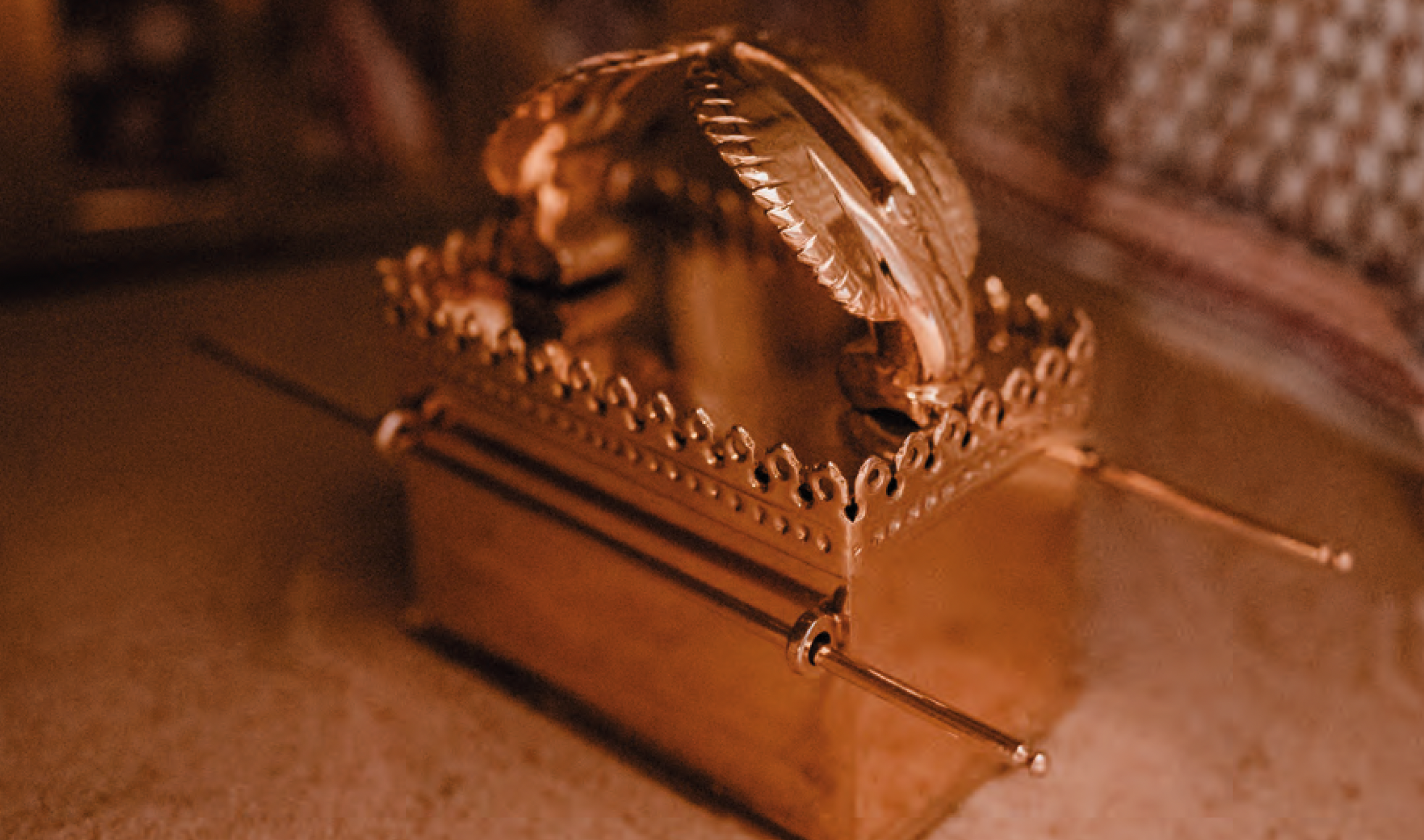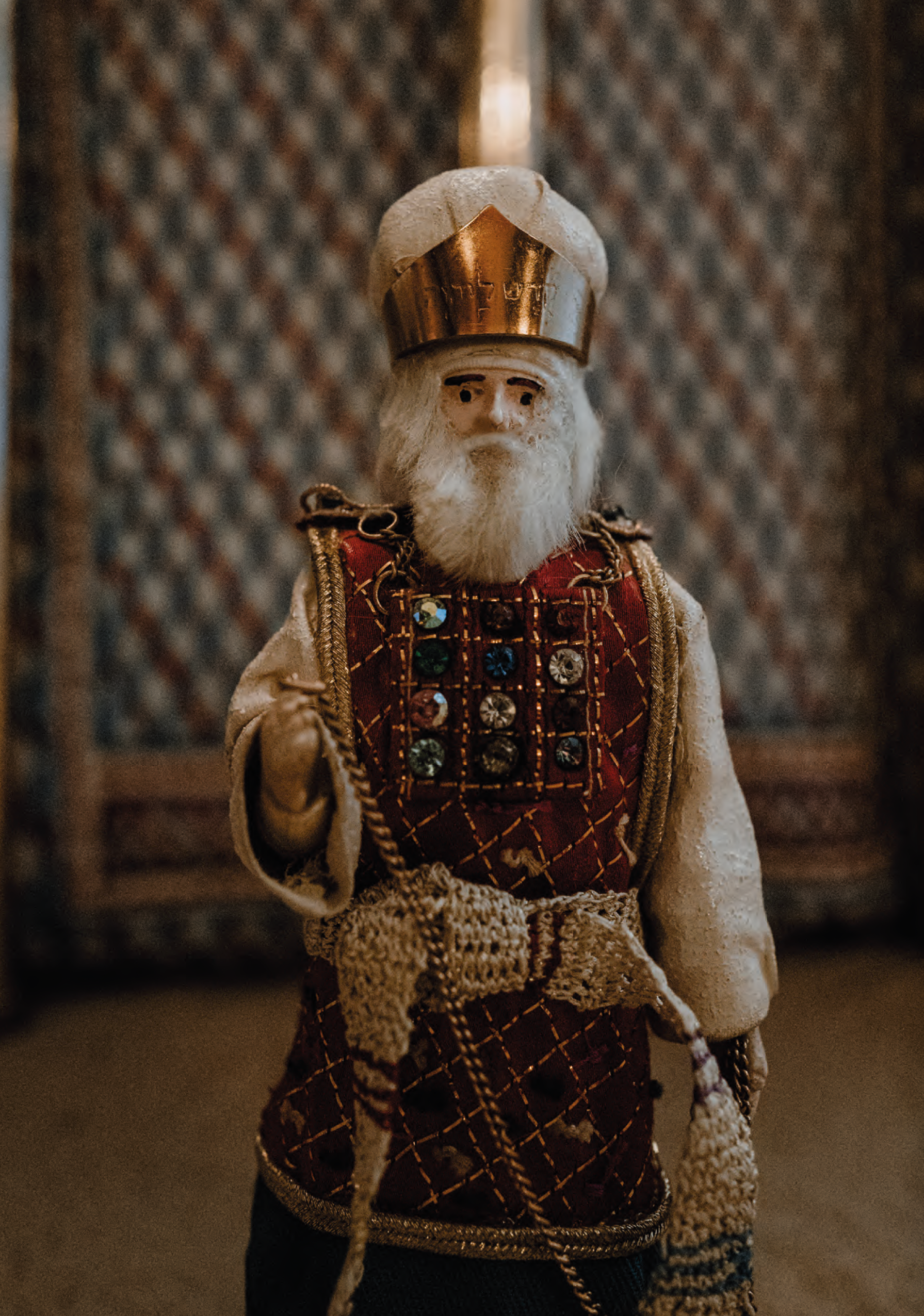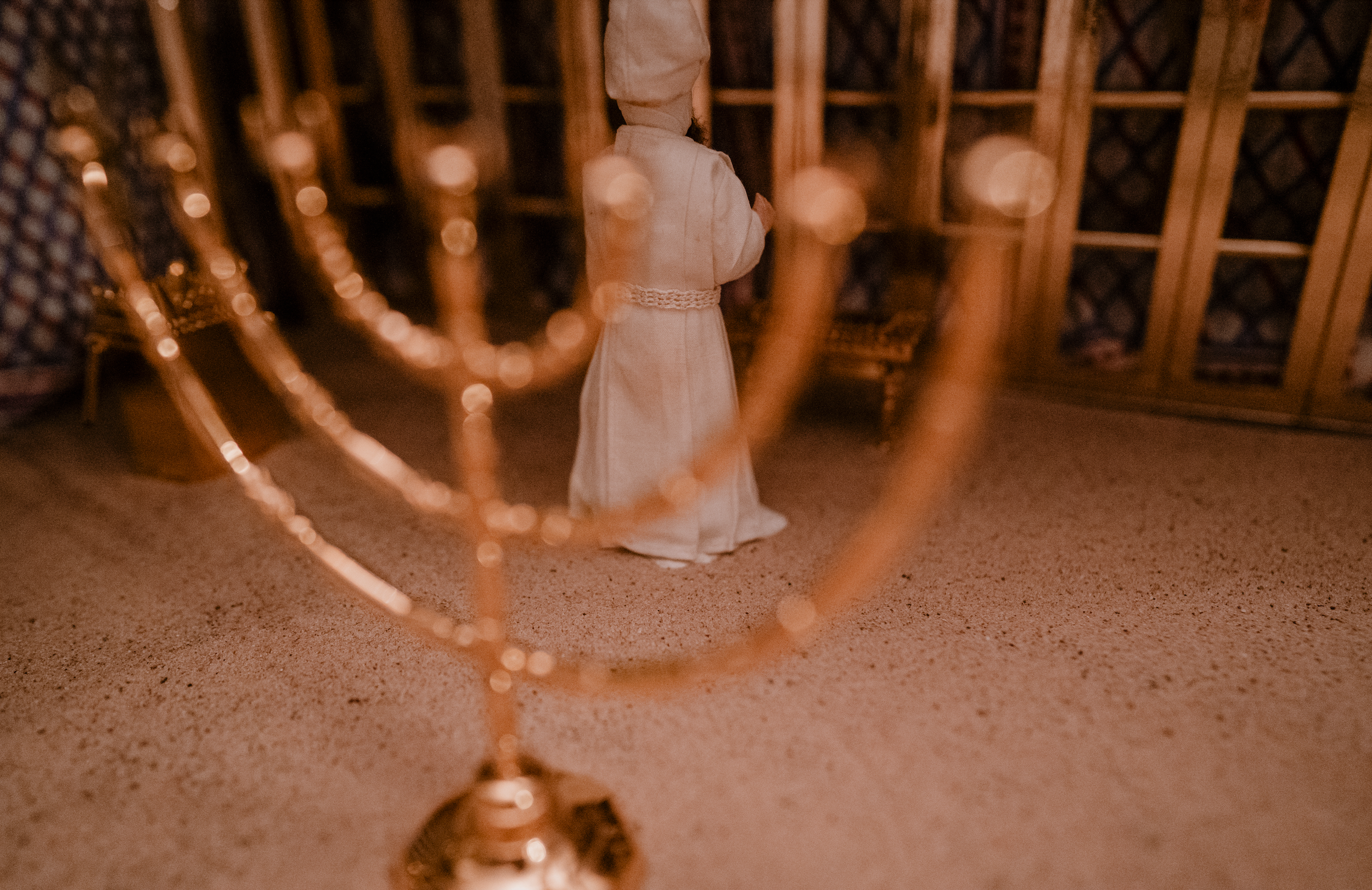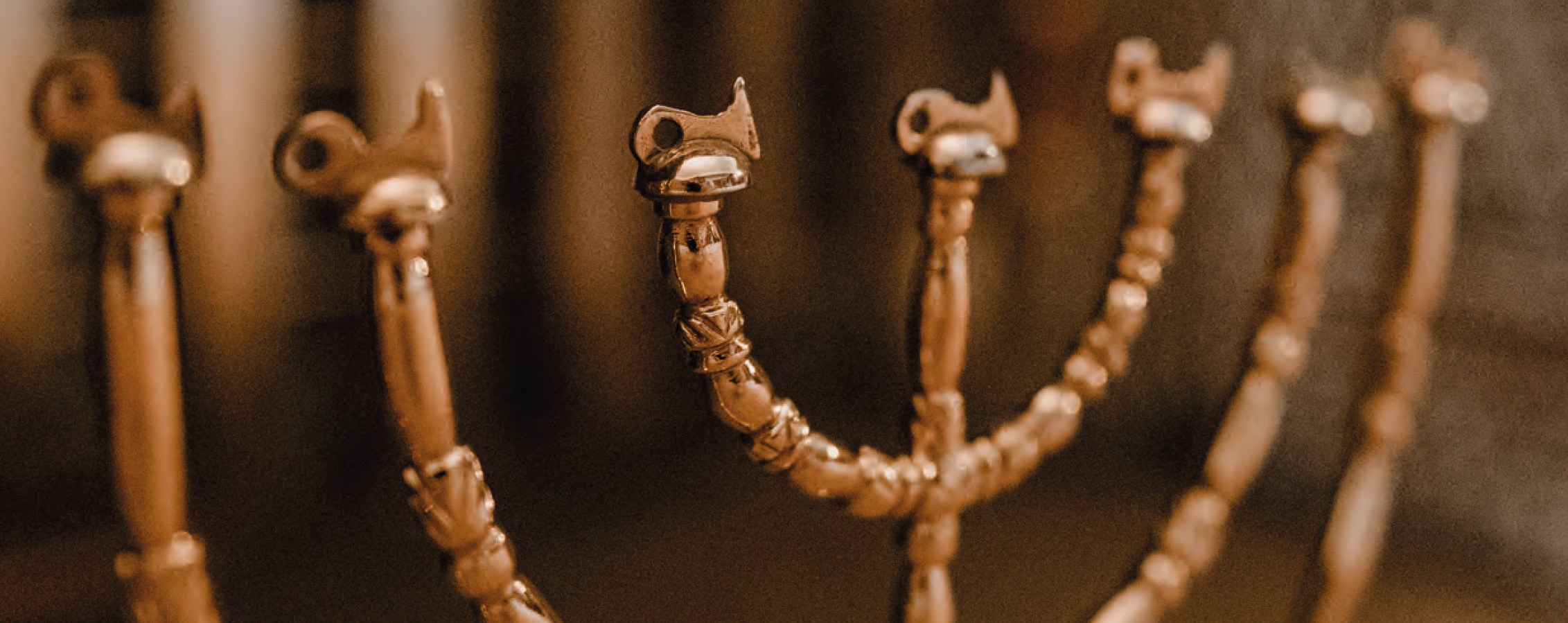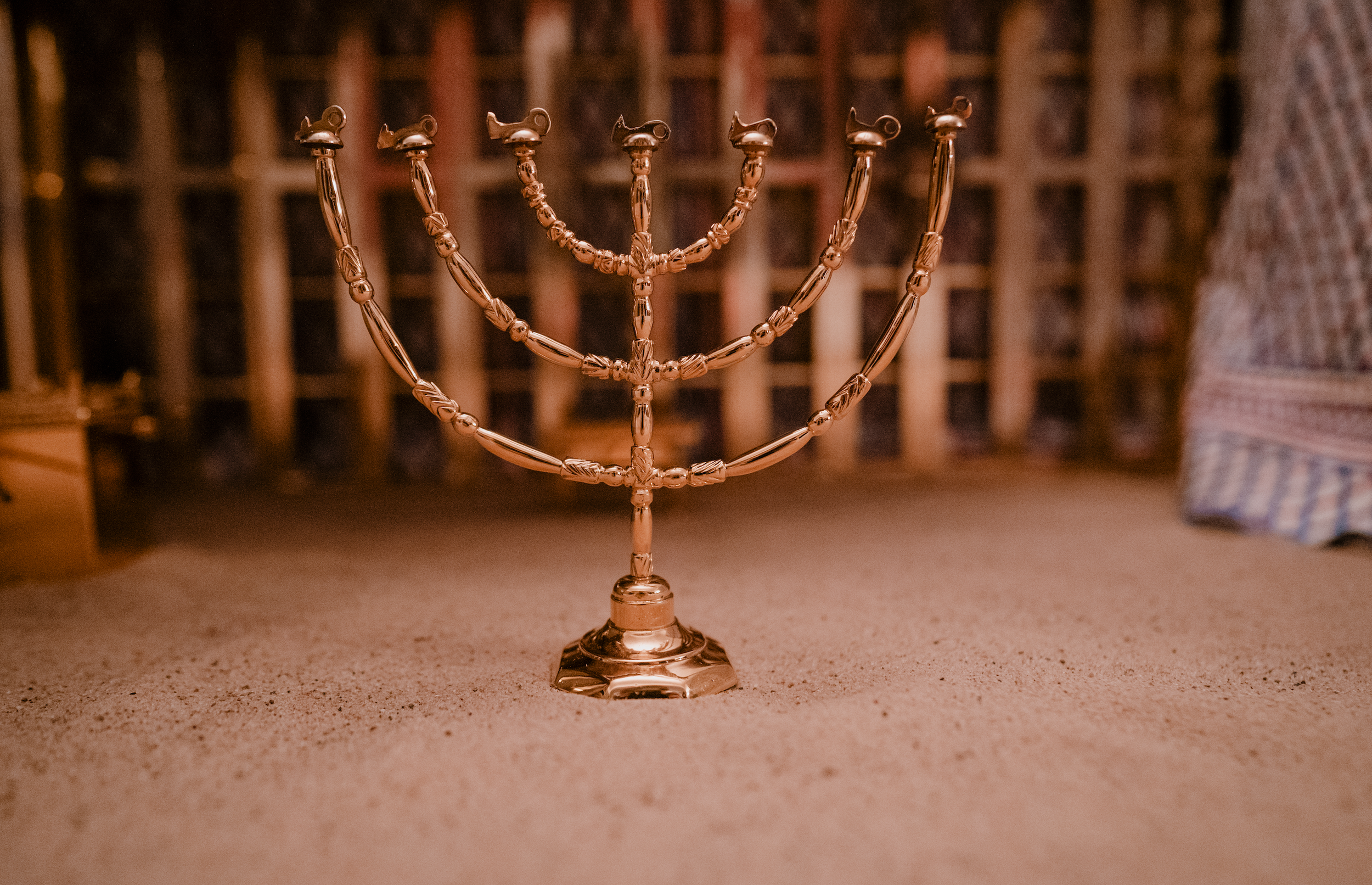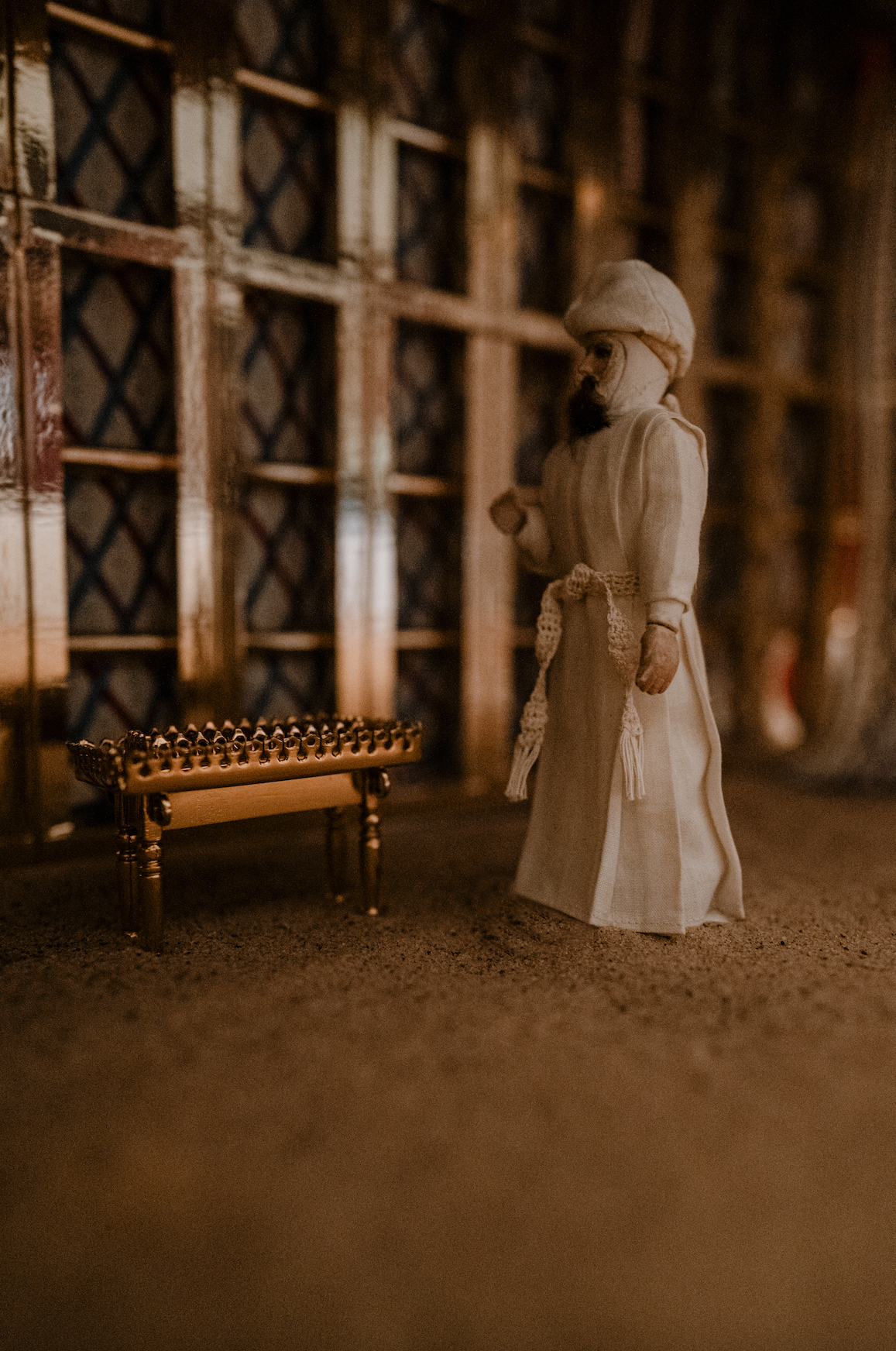Drawing Near to God
Lessons from the Tabernacle for Today
by David Gooding
Available Formats
This beautifully illustrated book brings to life the ancient story of God’s interactions with his people as he travelled with them through the wilderness. With insights drawn from both the Old Testament and the New, David Gooding helps us to see how this seemingly obscure topic is relevant and can be accessible to anyone. In ten brief chapters he shows that the main lessons of the tabernacle provide an introduction to the basic doctrines of the Christian faith, teach us how we must approach God, and give us clear guidance for leading others on this life changing journey. These lessons are designed to help teachers understand and present the truths of the tabernacle to others, and are also ideal as a personal or group study guide.
This edition includes:
Over forty full-colour photographs of David Gooding’s tabernacle model
Revised and expanded text to appeal to a wide audience
Lesson objectives for each chapter to help teachers guide students
Full Bible quotations to provide immediate access to the text
Read
Pictures from each chapter have been included with the text. Click the images to scroll through them.
Preface
First published in 1965 under the title How to Teach the Tabernacle to Children, David Gooding’s aim was to provide teachers with a means of communicating the tabernacle as a ‘God-given and brilliant illustration’ of the ‘basic doctrines of the Christian faith’. Since then, Bible teachers the world over have taken these lessons and adapted them to teach the tabernacle, not only to children, but to people of all ages. Many others have used the material as a stimulus for personal Bible study or as an evangelistic tool.
In these lessons, David Gooding gives a comprehensive overview of ten main features of the tabernacle, bringing them to life with insightful commentary and illustrations to accompany the biblical text. Highlighting the links between the Old and New Testaments, he also shows how the apostles used the tabernacle to explain the person of Christ.
New features of this edition include:
– Large, full-colour photographs of David Gooding’s tabernacle model to illustrate the lessons
– Revised text to ensure that the content is relevant for all ages
– Lesson objectives to guide teaching Full Bible quotations to allow immediate consultation of the text
– A variety of other tabernacle resources can be watched, read or listened to on our website: myrtlefieldhouse.com
The Myrtlefield Trust 2020
Introduction
Teach the tabernacle? In the modern world such a proposal might sound absurd, unrealistic. Understandably so, when the chapters of the Bible which describe it seem, at first sight, to contain nothing but long lists of obscure details about an ancient building. Just the very kind of thing to bore your classes stiff!
But there’s no denying it would be different from other normal run-of-the-mill lessons. What’s more, the lessons which one would normally use the tabernacle to convey are not some remote matters of ancient history, but the straightforward, basic doctrines of the Christian faith, of which the tabernacle is a God-given and brilliant illustration.
Of course, if one wants to, one can take it further; for instance, one can put the tabernacle into its historical context, and link it up with whatever the class knows of ancient history— or with the history of art. More important still, it helps class and teacher alike to see the link between the Old Testament and the New in a manner that needn’t be complicated or boring.
And then look at the splendid opportunity it offers for the use of visual aids. There are available nowadays presentations, large pictures, models, construction kits for children to make their own models, and sets of smaller pictures which younger children can colour.
This book, then, is for the teacher. Its illustrations will allow the teacher immediately to visualize what the tabernacle and its furniture looked like. The lessons, too, are for the teacher. They are not written with any particular age-group in mind, nor are they offered as containing each one the precise amount of material necessary for one lesson in class. They offer rather the raw material which teachers can adapt for themselves according to their own ideas and the needs of different classes.
David Gooding
Lesson 1: The Tabernacle
Key verse
And let them make me a sanctuary, that I may dwell in their midst. (Exodus 25:8)
Aims of the lesson
To learn why God asked the Israelites to build the tabernacle. To understand how God dwells with his people today, and intends to dwell with them eternally.
Description of the tabernacle
Exodus 26:1–37
Lead in
Have you ever gone camping or slept in a tent? This first lesson is about the tent God used when he went camping, and the reason why God went camping.
Main Ideas From the Past
God’s desire to dwell with his people
When the Israelites escaped from Egypt they had to take a long journey through a desert to get to the land God promised to give them, and on the way they had to live in tents. God loved them and wanted to be so near to them that they would know he was really with them. So he asked them to make him a tent and to put it right in the middle with all their own tents around it. Then he came and dwelt in that tent, and travelled all through the desert with them, protecting, guiding and blessing them.
Apply the idea
God loves us in the same way. He wants us to let him guide us and travel with us all the way through life.
Jesus called the temple ‘my Father’s house’
Later on in history God had other houses in which he lived among his people: Solomon’s temple (1 Kings 6–7); the temple built by Ezra and Nehemiah; the temple built by Herod the Great, which was the one to which the Lord Jesus went and in which he taught when he was on earth. The Lord Jesus loved the temple and called it ‘my Father’s house’ (John 2:16). He would not allow anyone to defile it by bringing sinful practices into it.
Heaven as God’s home
The Lord Jesus also called heaven ‘my Father’s house’ (John 14:2). So the tabernacle with its beautiful colours and gold and silver helps us to think about how beautiful heaven is. God wants to take us to his home in heaven; but he warns us that ‘nothing unclean will ever enter it, nor anyone who does what is detestable or false, but only those who are written in the Lamb’s book of life’ (Revelation 21:27).
Main Ideas for the Present
God does not dwell in houses now
The contrast emphasized by the New Testament for the present age is: ‘Yet the Most High does not dwell in houses made by hands’ (Acts 7:48). At the present time God dwells in the hearts of those who trust him and wherever Christians meet together in the name of the Lord Jesus.
God dwells in the hearts of those who trust him
The Lord Jesus said, ‘If anyone loves me, he will keep my word, and my Father will love him, and we will come to him and make our home with him’ (John 14:23). The Apostle Paul said to the Christians at Corinth, ‘Or do you not know that your body is a temple of the Holy Spirit within you, whom you have from God?’ (1 Corinthians 6:19).
Apply the idea
The Lord Jesus wants us to make him a home in our hearts, but he will not force an entrance. If we want him to enter, we must open the door and let him in. He says, ‘Behold, I stand at the door and knock. If anyone hears my voice and opens the door, I will come in to him and eat with him, and he with me’ (Revelation 3:20).
God dwells wherever Christians meet together in the name of the Lord Jesus
The Lord Jesus said, ‘For where two or three are gathered in my name, there am I among them’ (Matthew 18:20).
Apply the idea
We should always take every opportunity of meeting with other Christians to pray and praise. We should not neglect ‘to meet together, as is the habit of some’ (Hebrews 10:25).
Our future dwelling
When the Lord Jesus left his disciples and went back to heaven he said, ‘In my Father’s house are many rooms. If it were not so, would I have told you that I go to prepare a place for you? And if I go and prepare a place for you, I will come again and will take you to myself, that where I am you may be also’ (John 14:2–3).
Apply the idea
God wants us to be with him forever. If we make Christ a home in our hearts now, when he comes again he will take us to his Father’s home in heaven.
Lesson 2: The Altar of Sacrifice
Key verse
Behold, the Lamb of God, who takes away the sin of the world! (John 1:29)
Aims of the lesson
To learn why God asked the Israelites to put an altar of sacrifice in the tabernacle. To understand how God deals with sin today.
Description of the altar
Exodus 27:1–8
Position of the altar
Exodus 40:29
Lead in
Look at the picture of the tabernacle with all the tents around it. Ask everyone to imagine what it would be like to live in these tents. Point out the beautiful colours on the gate of the tabernacle, and suggest that everyone would be eager to find their way into God’s beautiful home and to come near to God. So start on the way, pass through the gate, and the first thing you see is the altar of sacrifice. What is it for?
Main Ideas From the Past
The reality of sin and the need to be forgiven
The altar of sacrifice reminded the people that they had sinned and needed forgiveness before they could enter God’s home.
Illustrate the idea
People put a doormat at the door of their houses; when we see it, it reminds us to look at our shoes and see if they are muddy and, if they are, to wipe them before we enter. So God put this altar at the gate to remind the people that they were dirty and unclean through sin, and must be cleansed before they could enter his home.
If we have done something wrong, and disobeyed our parents or teacher, or not followed our employer’s instructions, we feel afraid to meet them until it is forgiven. It is the same with God.
If we have got into debt, we are in danger of never again being free to do what we want until the debt is paid. In the past, people would be sent to prison unless the debt was paid. The Bible says that sin is debt. Not until the debt of our sin is paid, can we have peace with God, or enter heaven at last.
Consult the text
‘A certain money-lender had two debtors. One owed five hundred denarii, and the other fifty. When they could not pay, he cancelled the debt of both. Now which of them will love him more?’ Simon answered, ‘The one, I suppose, for whom he cancelled the larger debt.’ And he said to him, ‘You have judged rightly.’ Then turning towards the woman he said to Simon, ‘Do you see this woman? I entered your house; you gave me no water for my feet, but she has wet my feet with her tears and wiped them with her hair. You gave me no kiss, but from the time I came in she has not ceased to kiss my feet. You did not anoint my head with oil, but she has anointed my feet with ointment. Therefore I tell you, her sins, which are many, are forgiven—for she loved much. But he who is forgiven little, loves little.’ (Luke 7:41–47; see also Matthew 18:21–35)
The love of God and his hatred of sin
The altar of sacrifice showed that God loved the people though he hated their sin. In Romans 6:23 Paul states that ‘the wages of sin is death.’ The people had deserved these wages. But God allowed them to bring a lamb which died instead of them, so that they could be forgiven. Consider what happened when someone brought a lamb for a sin-offering:
The Lamb must be without blemish—the innocent was to die for the guilty. The person had to lay a hand on the head of the lamb and then it was killed—they admitted that it was for their sins personally that the lamb died.
Consult the text
If he brings a lamb as his offering for a sin offering, he shall bring a female without blemish and lay his hand on the head of the sin offering and kill it for a sin offering in the place where they kill the burnt offering. Then the priest shall take some of the blood of the sin offering with his finger and put it on the horns of the altar of burnt offering and pour out all the rest of its blood at the base of the altar. And all its fat he shall remove as the fat of the lamb is removed from the sacrifice of peace offerings, and the priest shall burn it on the altar, on top of the LORD’s food offerings. And the priest shall make atonement for him for the sin which he has committed, and he shall be forgiven. (Leviticus 4:32–35)
Main Ideas for the Present
The contrast between the Old Testament sacrifice of animals and the sacrifice of Christ
Many of the Israelites came diligently because they were convicted of their sins before God and were seeking his forgiveness. They brought the prescribed animal sacrifice, laid their hand on its head and confessed their sinfulness. But this could not give the worshipper complete forgiveness.
Consult the text
For it is impossible for the blood of bulls and goats to take away sins. Consequently, when Christ came into the world, he said, ‘Sacrifices and offerings you have not desired, but a body have you prepared for me; ... And by that will we have been sanctified through the offering of the body of Jesus Christ once for all’. (Hebrews 10:4–5, 10)
Why is it impossible for the blood of bulls and goats to take away sins? Well, animals don’t go to bed with a bad conscience! They know nothing about sin. We humans have a conscience. That is the glory of a human being and yet the tremendous burden. So the Old Testament sacrifices were only illustrations of what Christ would do when he came.
Illustrate the idea
The relation between the Old Testament sacrifices and the sacrifice of Christ can be illustrated by thinking about toy money and real money. Everybody knows that toy money is not real, that it will not pay real debts. But it is a useful thing for teaching children the idea of cost and value and payment. It prepares them for the function of real money. So the Old Testament lambs prepared people to understand why the Lamb of God had to come and die.
The contrast between the constantly repeated offering of the Old Testament sacrifices, and the sacrifice of Christ which was offered once and never has to be re-offered
The ancient Jewish priests were required to stand daily at that altar offering sacrifices of animals. Their work was a drudgery, for in the end those sacrifices could not take away sins. They were only symbols pointing forward to the great sacrifice of Christ that he offered once. He doesn’t have to offer it again and so he has sat down at the right hand of God offering complete forgiveness to all who believe.
Consult the text
And every [Jewish] priest stands daily at his service, offering repeatedly the same sacrifices, which can never take away sins. But when Christ had offered for all time a single sacrifice for sins, he sat down at the right hand of God. (Hebrews 10:11–12)
The reasons the sacrifice of Christ does not need to be re-offered
The offering was itself perfect
Christ does not need to keep on offering himself as the one sacrifice. He is forever finished with the process of offering.
Consult the text
For if the blood of goats and bulls, and the sprinkling of defiled persons with the ashes of a heifer, sanctify for the purification of the flesh, how much more will the blood of Christ, who through the eternal Spirit offered himself without blemish to God, purify our conscience from dead works to serve the living God. (Hebrews 9:13–14)
For it is impossible for the blood of bulls and goats to take away sins. Consequently, when Christ came into the world, he said, ‘Sacrifices and offerings you have not desired, but a body have you prepared for me; in burnt offerings and sin offerings you have taken no pleasure.’ Then I said, ‘Behold, I have come to do your will, O God, as it is written of me in the scroll of the book.’ When he said above, ‘You have neither desired nor taken pleasure in sacrifices and offerings and burnt offerings and sin offerings’ (these are offered according to the law), then he added, ‘Behold, I have come to do your will.’ He does away with the first in order to establish the second. And by that will we have been sanctified through the offering of the body of Jesus Christ once for all. (Hebrews 10:4–10)
The offering perfects those whom it sanctifies
When you put your faith in Jesus Christ as your Lord and Redeemer, your substitute and Saviour, your conscience is cleansed and you may know that you are ready to stand in the very presence of God.
Consult the text
For by a single offering he has perfected for all time those who are being sanctified. (Hebrews 10:14)
When you have full forgiveness, you do not need any more offerings
Christ’s one offering avails for the whole of life, in view of the one final judgment. Therefore God can offer to the repentant sinner a forgiveness for the whole of life.
Consult the text
He adds, ‘I will remember their sins and their lawless deeds no more.’ Where there is forgiveness of these, there is no longer any offering for sin. (Hebrews 10:17–18)
Just as there is only one judgment, so Christ needed to be offered only once
The Bible tells us that God does not hold court every day of the week. He says there is only one judgment, and it comes after death. Christ’s death upon the cross has already happened so he has already cleared the page of God’s judgment book on our behalf.
Consult the text
And just as it is appointed for man to die once, and after that comes judgement, so Christ, having been offered once to bear the sins of many, will appear a second time, not to deal with sin but to save those who are eagerly waiting for him. (Hebrews 9:27–28)
Fleeing to the altar for refuge
The question will arise: if Christ has died for the sins of the world, is everyone automatically forgiven? The answer, of course, is no. Only those who repent and trust Christ are forgiven.
Illustrate the idea
The need to come to Christ and trust him can be illustrated by the use of the altar as a place of refuge. A man who had accidentally killed someone, or had offended the king and now repented of it, could flee to the altar in the tabernacle (or later in the temple) and take hold of its horns. He would be safe there; but if he did not flee to it for refuge, he was subject to execution.
Consult the text
And Adonijah feared Solomon. So he arose and went and took hold of the horns of the altar. Then it was told Solomon, ‘Behold, Adonijah fears King Solomon, for behold, he has laid hold of the horns of the altar, saying, “Let King Solomon swear to me first that he will not put his servant to death with the sword.”’ And Solomon said, ‘If he will show himself a worthy man, not one of his hairs shall fall to the earth, but if wickedness is found in him, he shall die.’ So King Solomon sent, and they brought him down from the altar. And he came and paid homage to King Solomon, and Solomon said to him, ‘Go to your house.’ (1 Kings 1:50–53)
Lesson 3: The Laver
Key verse
He saved us, not because of works done by us in righteousness, but according to his own mercy, by the washing of regeneration and renewal of the Holy Spirit, whom he poured out on us richly through Jesus Christ our Saviour. (Titus 3:5–6)
Aims of the lesson
To consider the seriousness of spiritual defilement. To understand the role of daily cleansing in the life of a believer. To grasp the difference between cleansing by blood and cleansing by water.
Description of the laver
Exodus 30:17–21; 38:8. In the ESV, the laver is called the basin.
Position of the laver
Exodus 40:30–32
Lead in
Stress the importance of cleanliness and of washing. We need to wash away not only dirt we can see but also germs we cannot see. The danger of germ carrying can be observed in outbreaks of food-poisoning and many diseases that occur through people handling food without first washing their hands. So it is clear to see that dirt can lead to death.
Then continue with the idea that everyone is pretending to be living in the tents around the tabernacle, and they want to come to God. They have come in through the gate, passed the altar, and now they arrive at the laver.
Main Ideas from the Past
The need for cleansing
The laver was filled with water. When men became priests they had to bathe all over; and every time after that, when they came into the tabernacle to serve God, they first had to wash their hands and feet. The laver reminds us that we are all unclean. Our hands are unclean through doing wrong things. Our lips are unclean through speaking wrong things. And before we can serve God we must be cleansed.
Consult the text
Who shall ascend the hill of the LORD? And who shall stand in his holy place? He who has clean hands and a pure heart, who does not lift up his soul to what is false and does not swear deceitfully. (Psalm 24:3–4)
The laver also reminds us that though we have made ourselves unclean, God has made provision for our cleansing. We can think, for example, of David’s prayer for cleansing.
Consult the text
Purge me with hyssop, and I shall be clean; wash me, and I shall be whiter than snow. (Psalm 51:7)
Main Ideas for the Present
The contrast between physical defilement and spiritual defilement
The Pharisees were always very careful about washing their hands before eating, and complained to the Lord Jesus that his disciples were eating bread without first washing their hands (Matthew 15:1–20). Notice what the Lord Jesus said about spiritual defilement: that it is much more serious than physical defilement; and that it comes, not from outside, but from inside.
Consult the text
The Lord Jesus said, ‘it is not what goes into the mouth that defiles a person, but what comes out of the mouth; this defiles a person.... For out of the heart come evil thoughts, murder, adultery, sexual immorality, theft, false witness, slander. These are what defile a person.’ (Matthew 15:11, 19–20)
Illustrate the idea
We cannot see germs and viruses with the naked eye, but they can infect our bodies and make us ill. When we lie, steal or hate, those actions infect us, even though we cannot see them. When people quarrel, the happy atmosphere is spoiled and becomes tense and gloomy. When we nurse spite and revenge and envy in our hearts, it makes us sour inside and can injure our health.
The contrast between cleansing by water and cleansing by the Holy Spirit
Water can only cleanse our bodies; it cannot reach our hearts, which the Lord Jesus says are the source of our spiritual defilement. To cleanse our hearts from spiritual defilement we need a spiritual power, as the Apostle Peter discovered.
Consult the text
And I [Peter] remembered the word of the Lord, how he said, ‘John baptized with water, but you will be baptized with the Holy Spirit.’ (Acts 11:16)
In his experience of conversion and regeneration, Paul is an example of someone whose heart was cleansed by the Holy Spirit. This can be seen from his own description of himself to Titus when he says: what kind of man he was before he was saved (3:3); the principle of salvation: ‘not because of works done by us in righteousness’ (3:5); and the power that cleansed him: ‘the washing of regeneration and renewal of the Holy Spirit’ (3:5).
Consult the text
For we ourselves were once foolish, disobedient, led astray, slaves to various passions and pleasures, passing our days in malice and envy, hated by others and hating one another. But when the goodness and loving kindness of God our Saviour appeared, he saved us, not because of works done by us in righteousness, but according to his own mercy, by the washing of regeneration and renewal of the Holy Spirit, whom he poured out on us richly through Jesus Christ our Saviour, so that being justified by his grace we might become heirs according to the hope of eternal life. (Titus 3:3–7)
How we Receive the Holy Spirit
We receive the Holy Spirit when we trust in the Lord Jesus. We can see this in the experience of the centurion Cornelius.
Consult the text
While Peter was still saying these things, the Holy Spirit fell on all who heard the word. (Acts 10:44)
The greatest illustration of the cleansing that takes place once and for all at conversion, and of the constant cleansing that takes place after that, is the story of Christ’s washing of his disciples’ feet. As we read it, we should pay attention to the difference between ‘being bathed all over’ (at conversion) and ‘washing the feet’ (daily by the word of God applied to our lives by the Holy Spirit).
Consult the text
Now before the Feast of the Passover, when Jesus knew that his hour had come to depart out of this world to the Father, having loved his own who were in the world, he loved them to the end. During supper, when the devil had already put it into the heart of Judas Iscariot, Simon’s son, to betray him, Jesus, knowing that the Father had given all things into his hands, and that he had come from God and was going back to God, rose from supper. He laid aside his outer garments, and taking a towel, tied it round his waist. Then he poured water into a basin and began to wash the disciples’ feet and to wipe them with the towel that was wrapped round him. He came to Simon Peter, who said to him, ‘Lord, do you wash my feet?’ Jesus answered him, ‘What I am doing you do not understand now, but afterwards you will understand.’ Peter said to him, ‘You shall never wash my feet.’ Jesus answered him, ‘If I do not wash you, you have no share with me.’ Simon Peter said to him, ‘Lord, not my feet only but also my hands and my head!’ Jesus said to him, ‘The one who has bathed does not need to wash, except for his feet, but is completely clean. And you are clean, but not every one of you.’ For he knew who was to betray him; that was why he said, ‘Not all of you are clean.’ (John 13:1–11)
The difference between cleansing by water and cleansing by blood
Some people find it difficult to see the difference between cleansing by blood and cleansing by water. It will help everyone to understand the lesson more clearly if we consider the following. In the tabernacle court there were two vessels: the altar, which provided cleansing by blood; and the laver, which provided cleansing by water. The New Testament also speaks of both kinds of cleansing.
Consult the text
The blood of Jesus his Son cleanses us from all sin. (1 John 1:7)
Christ loved the church and gave himself up for her, that he might sanctify her, having cleansed her by the washing of water with the word. (Ephesians 5:25–26)
Let us draw near with a true heart in full assurance of faith, with our hearts sprinkled clean [i.e. with blood] from an evil conscience and our bodies washed with pure water. (Hebrews 10:22)
Illustrate the idea
A notorious criminal murders a man in a drunken brawl. Suppose the president grants him a pardon. The man will then escape the penalty of the law and will go free. But if he is ever to be fit to live with the president in the president’s home as his friend, he will need more than pardon. He will need to have his character changed and to be cleansed from his evil and dirty habits.
So Christ by his blood brings us forgiveness; and also by the power of the Holy Spirit he cleanses us, gives us new life and a new nature and fights within us the daily battle against sin.
Consult the text
In him we have redemption through his blood, the forgiveness of our trespasses, according to the riches of his grace. (Ephesians 1:7)
Having purified your souls by your obedience to the truth for a sincere brotherly love, love one another earnestly from a pure heart, since you have been born again, not of perishable seed but of imperishable, through the living and abiding word of God; for ‘All flesh is like grass and all its glory like the flower of grass. The grass withers, and the flower falls, but the word of the Lord remains for ever.’ And this word is the good news that was preached to you. (1 Peter 1:22–25)
But I say, walk by the Spirit, and you will not gratify the desires of the flesh. For the desires of the flesh are against the Spirit, and the desires of the Spirit are against the flesh, for these are opposed to each other, to keep you from doing the things you want to do. But if you are led by the Spirit, you are not under the law. (Galatians 5:16–18)
Lesson Four: The Incense Altar
Key verse
Consequently, he is able to save to the uttermost those who draw near to God through him, since he always lives to make intercession for them. (Hebrews 7:25)
Aims of the lesson
To understand how sinful people can have their prayers heard by God. To discover what it means for Christ to be our high priest and intercessor.
Description of the incense altar
Exodus 30:1–10
Lead in
When we love someone, we love to talk to them, to tell them all we have been doingand what we hope to do, and to seek their advice. So God loves us to talk to him—and this talking to God we call prayer.
Point out where the incense altar stood. It stood in front of the veil, which, inturn, hung in front of God’s throne, the ark and mercy seat. The priests stood at thisaltar when they talked to God in prayer.
Main Ideas From the Past
How Israel's prayers ascended to God
When the people prayed, their representative, the priest, used to offer incense on the incense altar.This was what Zechariah, the father of John the Baptist, was doing when the angel appeared to himand said, ‘your prayer has been heard’ (Luke 1:8–23).
The idea of offering incense was that the people were sinful and could not ask God for anythingon the ground of their own merit. So they offered their prayer to God surrounded, so to speak, byclouds of sweet-smelling incense, so that their prayer might come in to God amid the fragrance ofthe incense. We can see something similar happening in the scene at the incense altar in the book ofRevelation.
Consult the text
And another angel came and stood at the altar with a golden censer, and he was given much incense to offerwith the prayers of all the saints on the golden altar before the throne, and the smoke of the incense, with theprayers of the saints, rose before God from the hand of the angel. Then the angel took the censer and filled itwith fire from the altar and threw it on the earth, and there were peals of thunder, rumblings, flashes of lightning,and an earthquake. (Revelation 8:3–5)
The high priest's intercession
Though all the people could pray to God at any time, they had a special priest, called the high priest, to represent them before God. When he went to pray to God for the people, he wore on his breast a breastplate in which there were twelve precious stones, and on each stone there was written a name of one of the twelve tribes of Israel (Exodus 28:15–29); so that he carried their names on his heart before God.
Order of stones on the high priest’s breastplate
Row 1: Emerald, chrysolite, and carnelian
Row 2: Moonstone, sapphire, and turquoise
Row 3: Amethyst, agate, and jacinth
Row 4: Jasper, onyx and beryl
Note: The stones are here listed in the order they would have appeared on the high priest’s breastplate. Since Hebrew readers read text from right to left, when listed in English translations they appear back to front.
The Israelite encampment (Numbers 2:1–3:39)
Main Ideas for the Present
How Our prayers are Heard by God
We have no more merit than the Israelites had. We cannot claim answers to our prayers on the ground of our merit, any more than they could. But we can offer our prayers ‘in the name of the Lord Jesus’, as the Lord Jesus told us to, so that our prayers come before God and are heard by him and are granted because of the merit of the Lord Jesus.
Consult the text
The Lord Jesus said: ‘Until now you have asked nothing in my name. Ask, and you will receive, that your joy may be full.’ (John 16:24)
How the Lord can intercede for us
Christians have a high priest to pray for them, just like the Israelites did. But the Christians’ high priest is not a mere man on earth, subject to weakness and death, but the Son of God himself (Hebrews 7:23– 28). Because he ever lives, ‘he is able to save to the uttermost those who draw near to God through him’ (Hebrews 7:25).
At the same time he is a real man, who once lived on this earth and was tempted in all points like we are, yet without sin. This means he understands what it means for us to be tempted, and this makes him a sympathetic and merciful high priest to whom we may come fearlessly at any time.
Consult the text
For the law appoints men in their weakness as high priests, but the word of the oath, which came later than the law, appoints a Son who has been made perfect for ever. (Hebrews 7:28)
Since then we have a great high priest who has passed through the heavens, Jesus, the Son of God, let us hold fast our confession. For we do not have a high priest who is unable to sympathize with our weaknesses, but one who in every respect has been tempted as we are, yet without sin. Let us then with confidence draw near to the throne of grace, that we may receive mercy and find grace to help in time of need. (Hebrews 4:14–16)
The double purpose of our Lord's intercession
Purpose 1: He prays for us to maintain our faith so that nothing shall be able to break our faith and separate us from the love of God. Consider the example of the Apostle Peter. Though he fell under temptation his faith did not fail, because Christ had prayed for him.
Consult the text
Simon, Simon, behold, Satan demanded to have you, that he might sift you like wheat, but I have prayed for you that your faith may not fail. And when you have turned again, strengthen your brothers. (Luke 22:31–32)
Purpose 2: He prays for us as our Advocate when we fall and sin, so that God does not reject us. Therefore, we can come directly to the Lord Jesus in prayer at any time and in any place, and find mercy and grace to help in time of need. So, as Hebrews 4:16 encourages us to do, ‘Let us then with confidence draw near to the throne of grace.’
Consult the text
My little children, I am writing these things to you so that you may not sin. But if anyone does sin, we have an advocate with the Father, Jesus Christ the righteous. He is the propitiation for our sins, and not for ours only but also for the sins of the whole world. (1 John 2:1–2)
Illustrate the idea
Describe how an advocate pleads for a defendant in a law court. An earthly advocate tries to minimize the seriousness of his client’s offence, and to make as many excuses as he can for him or her. This isn’t the case with Christ our Advocate. He is ‘the righteous’. He never tries to minimize our sin. He can admit the worst, since his sacrifice is sufficient to atone for it all. Nor does he have to plead our merit; for the basis of our forgiveness is not our merit, but his sacrifice.
Apply the idea
Notice the assurance of salvation that our Lord’s intercession brings to the believer. To consider this further, read the words of Paul about our Lord’s intercession in Romans 8:31–39 and our Lord’s intercessory prayer in John 17.
Lesson 5: The Veil
Key verses
And Jesus cried out again with a loud voice and yielded up his spirit. And behold, the curtain of the temple was torn in two, from top to bottom. And the earth shook, and the rocks were split. (Matthew 27:50–51)
Aims of the lesson
To understand the role of the veil in letting people near God while keeping them out of his immediate presence.
To see that the Lord Jesus’ humanity functioned in the same way as the veil by allowing people to get close to God.
To realize that because the veil is now torn open we can have full access to God’s presence.
Description and function of the veil
Exodus 26:31–35
Lead in
Return to the idea of a journey from outside in towards the presence of God. So far we have come through the gate, passed the altar of sacrifice, then the laver, then through the door into the Holy Place to the incense altar. But now as we attempt to move forward, we find the way barred by a wall of linen, brilliantly coloured with blue, purple and scarlet, on which are woven figures of mighty angels called cherubim. This wall of linen is called the veil. Note especially the position of the veil between the Holy Place and the Most Holy Place.
Main Ideas from the Past
The veil served a double purpose
The first purpose was to keep people out from the presence of God
The cherubim on the veil remind us of what happened in the garden of Eden. When Adam and Eve sinned, God drove them out of the garden and placed the cherubim and the flame of a sword to guard the way to the tree of life. So in the tabernacle people were not allowed to come into the immediate presence of God. The way into the Holiest was not yet made plain (Hebrews 9:6–8). There are several reasons for this:
The first reason is God’s indignation against sin. His righteousness demands that sin be banished and punished (Romans 1:18).
Second, while the debt of their sin remained unpaid, humans could not bear to be in the presence of God.
Illustrate the idea
We can relate to this in our own experience of the feeling of shame. When we have done something very bad, and it is discovered and exposed in front of other people, we feel so ashamed that we wish we could run away and hide. So if we appeared before God with our sins unforgiven, the light of God’s presence would make us so ashamed that we could not live. This was true of the experience of even a holy man like Isaiah the prophet.
Consult the text
In the year that King Uzziah died I saw the LORD sitting upon a throne, high and lifted up; and the train of his robe filled the temple. Above him stood the seraphim. Each had six wings: with two he covered his face, and with two he covered his feet, and with two he flew. And one called to another and said: ‘Holy, holy, holy is the LORD of hosts; the whole earth is full of his glory!’ And the foundations of the thresholds shook at the voice of him who called, and the house was filled with smoke. And I said: ‘Woe is me! For I am lost; for I am a man of unclean lips, and I dwell in the midst of a people of unclean lips; for my eyes have seen the King, the LORD of hosts!’ Then one of the seraphim flew to me, having in his hand a burning coal that he had taken with tongs from the altar. And he touched my mouth and said: ‘Behold, this has touched your lips; your guilt is taken away, and your sin atoned for.’ (Isaiah 6:1–7)
The sacrifices of animals could never take away sins and could never satisfy anyone’s conscience that their sins had been all completely forgiven. So men were never sure that they were fit to enter God’s presence either in the tabernacle or in heaven.
Consult the text
For since the law has but a shadow of the good things to come instead of the true form of these realities, it can never, by the same sacrifices that are continually offered every year, make perfect those who draw near. Otherwise, would they not have ceased to be offered, since the worshippers, having once been cleansed, would no longer have any consciousness of sins? But in these sacrifices there is a reminder of sins every year. For it is impossible for the blood of bulls and goats to take away sins. (Hebrews 10:1–4)
The second purpose of the veil was to allow people to come into the Holy Place
If there had been no veil, the priests would not have dared to enter even the Holy Place; for with no veil separating the two compartments, the Holy Place and the Most Holy Place would have been one, and anyone entering the Holy Place would have been at once in the immediate presence of God. So God had the veil put in position to screen the Most Holy Place so that they could come into the Holy Place, to the lampstand, the table and the incense altar and enjoy these lovely things and find out as much about God as possible, and come as near as possible. And as they looked at the veil with its beautiful colours, blue, purple and scarlet, and the cherubim, they could begin to learn something of God’s holiness and beauty.
The New Testament counterpart
Hebrews 10:20 indicates that the veil in the tabernacle found a counterpart in the flesh, that is the humanity of Christ. So the tabernacle and the veil can be used as an illustration of what happened when our Lord was on earth. Just as God’s presence was screened by the veil, so ‘in [Christ] the whole fullness of deity dwells bodily’ (Colossians 2:9). And just as priests could come near and look at the beautiful veil behind which was God’s presence, so when men and women came near Christ, looked into his face and watched his deeds and heard his words, they could see what God was like.
We must emphasize, however, that Christ’s life could not save us. Many people wrongly imagine that if we admire Christ’s life and try to imitate it, this will gain us entry to heaven. Like the veil, Christ’s life, being so sinless and beautiful, simply shows us how sinful and unclean we are; it therefore served to bar our way to heaven. Unless we could come up to his standard, his life would condemn us as unfit for God’s presence. This leads us to the necessity of Christ’s death, and so to the next stage of the lesson.
Main Ideas for the Present
The veil has been removed
The main contrast is that for the Christian the veil has been completely removed and the way into God’s presence has been opened. We can see this when we contrast two passages in Hebrews.
Consult the text
These preparations having thus been made, the priests go regularly into the first section, performing their ritual duties, but into the second only the high priest goes, and he but once a year, and not without taking blood, which he offers for himself and for the unintentional sins of the people. By this the Holy Spirit indicates that the way into the holy places is not yet opened as long as the first section is still standing. (Hebrews 9:6–8)
Therefore, brothers, since we have confidence to enter the holy places by the blood of Jesus, by the new and living way that he opened for us through the curtain, that is, through his flesh, and since we have a great priest over the house of God, let us draw near with a true heart in full assurance of faith, with our hearts sprinkled clean from an evil conscience and our bodies washed with pure water. (Hebrews 10:19–22)
Pay attention to what happened when Christ finished the work of suffering for sin. In Christ’s day it was not the tabernacle but a great and glorious temple, called Herod’s temple, that was in use in Jerusalem. But like the tabernacle it too had a veil. It was this veil that was torn down by God. The tearing of the veil was an exceedingly significant act.
Consult the text
And Jesus cried out again with a loud voice and yielded up his spirit. And behold, the curtain of the temple was torn in two, from top to bottom. And the earth shook, and the rocks were split. (Matthew 27:50–51)
The veil was torn in two only after Christ died
The tearing of the veil did not happen when Christ was preaching, nor when he was doing miracles, but when he died. It was because he died for our sins (1 Corinthians 15:3); and because he completely finished the work of suffering the wrath of God against sin and God was satisfied with his sacrifice, God tore down the veil to show that for those who trust Christ the way into his presence is completely open. Study the flow of the argument in Hebrews 10:11–22 and notice the connection between Christ’s perfect sacrifice and our boldness to enter the Holiest.
Consult the text
And every priest stands daily at his service, offering repeatedly the same sacrifices, which can never take away sins. But when Christ had offered for all time a single sacrifice for sins, he sat down at the right hand of God, waiting from that time until his enemies should be made a footstool for his feet. For by a single offering he has perfected for all time those who are being sanctified. And the Holy Spirit also bears witness to us; for after saying, ‘This is the covenant that I will make with them after those days, declares the Lord: I will put my laws on their hearts, and write them on their minds’, then he adds, ‘I will remember their sins and their lawless deeds no more.’ Where there is forgiveness of these, there is no longer any offering for sin. Therefore, brothers, since we have confidence to enter the holy places by the blood of Jesus, by the new and living way that he opened for us through the curtain, that is, through his flesh, and since we have a great priest over the house of God, let us draw near with a true heart in full assurance of faith, with our hearts sprinkled clean from an evil conscience and our bodies washed with pure water. (Hebrews 10:11–22)
What it means for us to enter the Holiest
When you are talking about the earthly tabernacle, and the rending of the literal veil in Herod’s temple, some may think that for us to enter the Holiest means to enter church. So it is important to point out that ‘Christ has entered, not into holy places made with hands, which are copies of the true things, but into heaven itself, now to appear in the presence of God on our behalf’ (Hebrews 9:24). Likewise for us, boldness to enter into the Holiest through the veil means that we are able to enter in mind, thought and spirit into God’s presence in heaven, and to be utterly sure that our sins have been forgiven and that God accepts us.
Apply the idea
If those who trust Christ already have freedom and boldness to enter God’s presence in spirit now because of Christ’s perfect sacrifice, there can be no uncertainty about their going to heaven when they die. We can know the assurance of God’s welcome in the words of sacred Scripture, ‘since we have confidence to enter the holy places by the blood of Jesus, by the new and living way that he opened for us ... let us draw near’ (Hebrews 10:19–20, 22).
Lesson 6: The Ark and the Mercy Seat
Key verse
Let us then with confidence draw near to the throne of grace, that we may receive mercy and find grace to help in time of need. (Hebrews 4:16)
Aims of the lesson
To understand the role of the old covenant in showing us what God is like.
To notice the key differences between the old and new covenants.
Lead in
Every earthly king has a throne. Every government has to have laws. Talk about the need for laws and what happens when people break them. If we were going to meet a president or a king, we would need to know how we were to approach him or her. In this lesson we are to learn how to approach God. In the tabernacle the Most Holy Place was God’s throne room, and the piece of furniture standing there was God’s throne. There were two parts to it: the ark and the mercy seat.
The Ark of the Covenant
The ark was an oblong chest covered inside and out with gold. In it were kept the two tables of stone on which were written the Ten Commandments. These were God’s laws. They are called the old covenant.
Description of the ark of the covenant
Exodus 25:10–16
Position of the ark of the covenant
Exodus 26:33–34
The Mercy Seat
The mercy seat was a slab of solid gold. Upon it sat two golden cherubim, one on each end with wings stretched toward each other, overshadowing the mercy seat. From here God spoke his commands and gave his guidance to the Israelites. Here, too, the high priest came to meet with God once a year on the great Day of Atonement.
Description of the mercy seat
Exodus 25:17–22
Main Ideas From the Past
What the law of God teaches us
From the old covenant we learn how holy God is. We learn this from the laws of that covenant, the Ten Commandments. This is not an easy lesson to put across. Many people have the idea that God’s law is like a school examination: if they manage to keep seventy percent of it, they imagine they have done very well and God will be pleased with them; just as a teacher would be pleased with a child who scored seventy percent in an examination. This is not only wrong, but dangerous. If we never learn how holy God’s law is, we will never realize our need of salvation. We will always hope that if we do our best to keep God’s law, we will enter heaven at last. The New Testament’s statements about the law will help to make this clear.
How the New Testament explains the law
Offending in one point brings us under the law's curse
If we break only one of God’s laws once, we have fallen short of perfection, we have sinned. If this at first seems unfair some illustrations might help to show that this must be so.
Illustrate the idea
If a crane is lifting a heavy load by means of a big chain and all the links in the chain break, the load will fall. But will the load fall if only one link breaks? Yes, of course the load will still fall even if only one link in the chain breaks.
A man is being chased by a lion, and he comes to a very deep chasm fifteen feet wide and one hundred feet deep. He tries to jump across the chasm. Suppose he manages to jump over the entire distance except for the last foot. What happens? One foot is not much compared with the other fourteen. But to miss by one foot is as fatal as to miss by five feet or ten feet.
Consult the text
For whoever keeps the whole law but fails in one point has become accountable for all of it. (James 2:10)
The law tells us what we are like in comparison to God
Consult the text
For by works of the law no human being will be justified in his sight, since through the law comes knowledge of sin. (Romans 3:20)
This is difficult to get across because people naturally think that God gave us the law so that we should keep it in order to win acceptance with God.
Illustrate the idea
We can illustrate the purpose and function of the law, as stated in Romans 3:20, by comparing the law with a thermometer. When we are ill the doctor uses a thermometer to find out our temperature and to show us how ill we are. But no one swallows a thermometer in order to get better.
So God’s law exposes our sin and shows us how sinful we are, so that we will repent and receive Christ as Saviour. To try to win salvation by keeping God’s law is like swallowing the thermometer in order to get better. Really it is worse. It makes out that Christ’s death was unnecessary: ‘for if righteousness were through the law, then Christ died for no purpose’ (Galatians 2:21).
Main Ideas for the Present
The great contrast is between the old covenant and the new covenant. The difference between these two covenants is so vital to a proper understanding of Christianity that you would do well to study the major passages in the New Testament that deal with the subject (e.g. Hebrews 8:6–13; 10:14–18; 2 Corinthians 3; Galatians 3:10–29). Here, for the purposes of this lesson, is a survey of the institution, benefits and terms of the new covenant.
The institution of the new covenant
At the last supper, on the eve of his crucifixion, Christ announced to his apostles that by his death he was about to establish the new covenant.
Consult the text
And he took a cup, and when he had given thanks he gave it to them, saying, ‘Drink of it, all of you, for this is my blood of the covenant, which is poured out for many for the forgiveness of sins’. (Matthew 26:27–28)
For I received from the Lord what I also delivered to you, that the Lord Jesus on the night when he was betrayed took bread, and when he had given thanks, he broke it, and said, ‘This is my body which is for you. Do this in remembrance of me.’ In the same way also he took the cup, after supper, saying, ‘This cup is the new covenant in my blood. Do this, as often as you drink it, in remembrance of me.’ For as often as you eat this bread and drink the cup, you proclaim the Lord’s death until he comes. (1 Corinthians 11:23–26)
The benefits of the new covenant
In contrast with the old covenant which condemns us, the new covenant brings us forgiveness, life and holiness.
Consult the text
For by a single offering he has perfected for all time those who are being sanctified. And the Holy Spirit also bears witness to us; for after saying, ‘This is the covenant that I will make with them after those days, declares the Lord: I will put my laws on their hearts, and write them on their minds’, then he adds, ‘I will remember their sins and their lawless deeds no more.’ Where there is forgiveness of these, there is no longer any offering for sin. (Hebrews 10:14–18)
Such is the confidence that we have through Christ towards God. Not that we are sufficient in ourselves to claim anything as coming from us, but our sufficiency is from God, who has made us competent to be ministers of a new covenant, not of the letter but of the Spirit. For the letter kills, but the Spirit gives life ... Now the Lord is the Spirit, and where the Spirit of the Lord is, there is freedom. And we all, with unveiled face, beholding the glory of the Lord, are being transformed into the same image from one degree of glory to another. For this comes from the Lord who is the Spirit. (2 Corinthians 3:4–6, 17–18)
The terms of the new covenant
In Galatians, Paul explains that it was Christ who would receive the inheritance God promised to Abraham (Genesis 15, 22). And in Hebrews we are told that the Lord Jesus has become the mediator of the new covenant that was promised through Jeremiah the prophet (Jeremiah 31).
Consult the text
To give a human example, brothers: even with a man-made covenant, no one annuls it or adds to it once it has been ratified. Now the promises were made to Abraham and to his offspring. It does not say, ‘And to offsprings’, referring to many, but referring to one, ‘And to your offspring’, who is Christ. This is what I mean: the law, which came 430 years afterwards, does not annul a covenant previously ratified by God, so as to make the promise void. For if the inheritance comes by the law, it no longer comes by promise; but God gave it to Abraham by a promise. Why then the law? It was added because of transgressions, until the offspring should come to whom the promise had been made, and it was put in place through angels by an intermediary. Now an intermediary implies more than one, but God is one. (Galatians 3:15–20)
But as it is, Christ has obtained a ministry that is as much more excellent than the old as the covenant he mediates is better, since it is enacted on better promises. For if that first covenant had been faultless, there would have been no occasion to look for a second. For he finds fault with them when he says: ‘Behold, the days are coming, declares the Lord, when I will establish a new covenant with the house of Israel and with the house of Judah, not like the covenant that I made with their fathers on the day when I took them by the hand to bring them out of the land of Egypt. For they did not continue in my covenant, and so I showed no concern for them, declares the Lord. For this is the covenant that I will make with the house of Israel after those days, declares the Lord: I will put my laws into their minds, and write them on their hearts, and I will be their God, and they shall be my people. And they shall not teach, each one his neighbour and each one his brother, saying, “Know the Lord”, for they shall all know me, from the least of them to the greatest. For I will be merciful towards their iniquities, and I will remember their sins no more.’ In speaking of a new covenant, he makes the first one obsolete. And what is becoming obsolete and growing old is ready to vanish away. (Hebrews 8:6–13)
The difference between the old and new covenants
The difference in the terms of the two covenants is legal and technical, but it can be illustrated simply:
| Old covenant–a two-party covenant | New covenant–a one-party covenant | |||
|---|---|---|---|---|
| In the old covenant God had his part to do, and the people had theirs. The people had to keep the law and God was then to bless the people. But, of course, the people failed to keep the law and so broke the covenant. And so God rejected them. | The new covenant is sometimes called a testament, or will. In it Christ does everything: he bore the curse of the broken law for us; he gives us forgiveness, and his Holy Spirit writes God’s laws on our hearts and gradually makes us holy. | |||
| Consult the text | Consult the text | |||
| Behold, the days are coming, declares the Lord, when I will establish a new covenant with the house of Israel and with the house of Judah, not like the covenant that I made with their fathers on the day when I took them by the hand to bring them out of the land of Egypt. For they did not continue in my covenant, and so I showed no concern for them, declares the Lord. (Hebrews 8:8–9) | Christ redeemed us from the curse of the law by becoming a curse for us—for it is written, ‘Cursed is everyone who is hanged on a tree’. (Galatians 3:13) ‘This is the covenant that I will make with them after those days, declares the Lord: I will put my laws on their hearts, and write them on their minds’, then he adds, ‘I will remember their sins and their lawless deeds no more.’ Where there is forgiveness of these, there is no longer any offering for sin. (Hebrews 10:16–18) | |||
| Illustrate the idea | Illustrate the idea | |||
| Take two men, a farmer and a builder. The farmer wants the builder to build him a house. The builder says it will cost £200,000. So they make an agreement, or covenant. And both have equally a part to fulfil. The builder has to build the house, and the farmer has to pay £200,000. If the builder does not build the house, he does not get the money; and if the farmer does not pay the £200,000, he does not get the house. So it was with the old covenant. | A man makes a will in which he leaves £10,000 to his nephew. Only the man has a part to fulfil: he does all the giving. The nephew has nothing to fulfil: he simply receives the £10,000 as a gift—that is, if he wants it. If not, he can refuse it. So it is with the new covenant. |
This does not mean, of course, that all the world is automatically saved. People can still choose to reject Christ and his gifts, if they please. But we have nothing to do to earn or merit the benefits of his covenant. For this reason God’s throne is called the throne of grace, and we are exhorted to approach it with confidence.
Lesson 7: The High Priest and the Day of Atonement
Key verse
Truly, truly, I say to you, whoever hears my word and believes him who sent me has eternal life. He does not come into judgement, but has passed from death to life. (John 5:24)
Aims of the lesson
To follow the journey of the high priest on the Day of Atonement.
To understand the three stages of the Lord’s appearing.
Lead in
One day we shall all have to stand before God’s throne. Will he accept us and welcome us into his home and heaven? Or will he reject us because we have sinned? Of course, we all hope he will accept us. But can we be sure? Yes! The Lord Jesus has told us how we can be sure that we shall not come into judgment. And God in his kindness wants us to understand the way to come to him acceptably. So in the tabernacle he has given us a beautiful illustration of this. The Most Holy Place was God’s throne room, and the ark and mercy seat formed his throne. It is a picture of God’s throne in heaven. Once a year the high priest was invited by God to enter the Most Holy Place and meet God. We are going to learn what preparations he had to make and what he had to do when he entered God’s presence.
In the first part of this lesson, we want simply to retell what happened on the Day of Atonement. The ceremonies are described in detail in Leviticus 16. To appreciate all that was happening, you should read through the whole chapter and note the main features. You will also find it helpful to familiarize yourself with the letter to the Hebrews, especially 9:11–10:22. There we find the similarities and contrasts between what the Jewish high priest did on the Day of Atonement and what our Lord has done.
Main Ideas from the Past
When God invited the high priest to come into his presence on behalf of the people he gave instructions for what the high priest was to bring as a sacrifice: first for himself and then for the people.
The sacrifice for the high priest
The high priest first offered a sacrifice for his own sins.
Consult the text
Aaron shall offer the bull as a sin offering for himself and shall make atonement for himself and for his house... Aaron shall present the bull as a sin offering for himself, and shall make atonement for himself and for his house. He shall kill the bull as a sin offering for himself. And he shall take a censer full of coals of fire from the altar before the Lord, and two handfuls of sweet incense beaten small, and he shall bring it inside the veil and put the incense on the fire before the Lord, that the cloud of the incense may cover the mercy seat that is over the testimony, so that he does not die. And he shall take some of the blood of the bull and sprinkle it with his finger on the front of the mercy seat on the east side, and in front of the mercy seat he shall sprinkle some of the blood with his finger seven times. (Leviticus 16:6, 11–13)
Here there is a very important contrast with Christ. He was sinless and had no need to offer a sacrifice for himself.
Consult the text
For it was indeed fitting that we should have such a high priest, holy, innocent, unstained, separated from sinners, and exalted above the heavens. He has no need, like those high priests, to offer sacrifices daily, first for his own sins and then for those of the people, since he did this once for all when he offered up himself. For the law appoints men in their weakness as high priests, but the word of the oath, which came later than the law, appoints a Son who has been made perfect for ever. (Hebrews 7:26–28)
Order of events on the Day of Atonement
- The high priest offered a bull as a sacrifice for his own sins
- The high priest entered the Holy Place, and placed incense in the incense altar
- The high priest took the blood of the bull into the Most Holy Place for his own sins
- The high priest chose between two goats, and offered a sacrifice for the sins of the nation
- The high priest took the blood of the goat into the Most Holy Place for the sins of the nation
- The high priest took the second goat, placed his hands on its head, and sent it into the wilderness
The sacrifice for the people
The first appearsance of the high priest
The high priest came out of the presence of God into the court where everybody could see him, approached the altar of sacrifice and in the sight of all the people offered a goat as a sacrifice for their sins.
Consult the text
Then he shall kill the goat of the sin offering that is for the people and bring its blood inside the veil and do with its blood as he did with the blood of the bull, sprinkling it over the mercy seat and in front of the mercy seat. (Leviticus 16:15)
The second appearsance of the high priest
This time he appeared, not before the people, but in the presence of God. That is, he took the blood of the goat that he had offered and brought it into the Most Holy Place and sprinkled ‘it over the mercy seat and in front of the mercy seat’ (Leviticus 16:15). So now trace his journey from the altar in the court, through the Holy Place, drawing aside the veil and entering the Most Holy Place.
The third appearsance of the high priest
Having sprinkled the blood in the Most Holy Place, he retraced his steps, going out past the veil, through the Holy Place, to the altar of sacrifice. There he took another goat, put both his hands on its head and confessed over it all the sins of the people. Then the goat was taken out into the desert never to return.
Consult the text
And when he has made an end of atoning for the Holy Place and the tent of meeting and the altar, he shall present the live goat. And Aaron shall lay both his hands on the head of the live goat, and confess over it all the iniquities of the people of Israel, and all their transgressions, all their sins. And he shall put them on the head of the goat and send it away into the wilderness by the hand of a man who is in readiness. The goat shall bear all their iniquities on itself to a remote area, and he shall let the goat go free in the wilderness. (Leviticus 16:20–22)
Main Ideas for the Present
The first appearance of our Lord
Our Lord came down from heaven to our earth where men and women could see him and at Calvary offered himself as a sacrifice for our sins. The difference between his sacrifice and those offered by the Jewish high priest is that they had to repeat their sacrifices every year, and some of them every day, but he only had to offer himself once.
Consult the text
He has no need, like those high priests, to offer sacrifices daily, first for his own sins and then for those of the people, since he did this once for all when he offered up himself. (Hebrews 7:27)
Nor was it to offer himself repeatedly, as the high priest enters the holy places every year with blood not his own, for then he would have had to suffer repeatedly since the foundation of the world. But as it is, he has appeared once for all at the end of the ages to put away sin by the sacrifice of himself. (Hebrews 9:25–26)
And every priest stands daily at his service, offering repeatedly the same sacrifices, which can never take away sins. But when Christ had offered for all time a single sacrifice for sins, he sat down at the right hand of God, waiting from that time until his enemies should be made a footstool for his feet. For by a single offering he has perfected for all time those who are being sanctified. (Hebrews 10:11–14)
The second appearance of our Lord
Just as the Jewish high priest took the blood of the sin offering into the Most Holy Place and sprinkled it upon and before the mercy seat, so our Lord after his death on the cross and his burial rose again and went back to heaven.
Consult the text
He entered once for all into the holy places, not by means of the blood of goats and calves but by means of his own blood, thus securing an eternal redemption. (Hebrews 9:12)
For Christ has entered, not into holy places made with hands, which are copies of the true things, but into heaven itself, now to appear in the presence of God on our behalf. (Hebrews 9:24)
It is important to point out that, just as the Jewish high priest went into the presence of God as a representative of the people, and when God accepted him God was accepting the people whom he represented, so Christ has entered God’s presence on behalf of all who trust him. If God has accepted him (and there is no doubt he has) that means that God has accepted all who trust him.
Again, when it says that Christ entered heaven ‘with his own blood’, it does not mean, of course, that he took his literal and actual blood into heaven. The New Testament is using the picture language of the tabernacle. The Jewish high priest sprinkled the blood upon and before the mercy seat. What he was saying by this act was this: he was admitting that the people had broken God’s holy law, which was written on the tables of stone in the ark beneath the mercy seat. The penalty for breaking the law was death. The people therefore deserved to die. But their sacrifice had died for them; the blood was the symbol and token that the sacrifice had died and the penalty of the law had been carried out.
We have sinned as well. We deserve the penalty of God’s law. We deserve to be banished from God’s presence. How then can we meet God? The answer is that Christ has already died for us. He has already suffered the penalty of sin. Now he appears in the presence of God for us. God is satisfied with his sacrifice. The judgment of our sin has been fully suffered by Christ. God has therefore accepted Christ and, in accepting him, has accepted all who trust him. That is why the Lord Jesus says that those who trust him will not come into judgment. He has already suffered the judgment for them.
The third appearance of our Lord
When the Jewish high priest had sprinkled the blood in the Most Holy Place, he came out and appeared before the people again. So our Lord, having entered heaven, will one day come again. Unlike the high priest who then had to deal with the second goat for the sin offering, our Lord when he comes again will not have to offer any more sin offerings. He will come to save his people, that is, to redeem their bodies and take them to his Father’s home in heaven.
Consult the text
Christ, having been offered once to bear the sins of many, will appear a second time, not to deal with sin but to save those who are eagerly waiting for him. (Hebrews 9:28)
But our citizenship is in heaven, and from it we await a Saviour, the Lord Jesus Christ, who will transform our lowly body to be like his glorious body, by the power that enables him even to subject all things to himself. (Philippians 3:20–21)
Lesson 8: The Lampstand
Key verse
I am the light of the world. Whoever follows me will not walk in darkness, but will have the light of life. (John 8:12)
Aims of the lesson
To understand how the lampstand demonstrated God as the source of life and light. To recognize different aspects of what it means that Jesus is the light of the world. To grasp the link between the Holy Spirit and spiritual life.
Description of the lampstand
Exodus 25:31–40
Lead in
Consider physical light. What a wonderful thing it is. It makes it possible for us to see things. When we filter light through a prism we see that white light is made up of many colours. The colour we see in things is really in the light, and life is impossible without light.
There are also metaphorical uses of the words light and darkness: Mentally: We talk about ‘light’ on difficult problems. A problem is dark when we cannot ‘see’ through it. Emotionally: We talk about a dark tragedy (not a bright tragedy, etc.) Morally: We talk about a dark crime (not a bright crime).
These thoughts lead us on to the lampstand in the tabernacle.
Main Ideas from the Past
The ornamentation of the lampstand
The lampstand was made to look as if it were a living tree. It had buds, blossoms and almonds both in its central stem and in its six branches. It had the three stages of life: bud—the potential of life; blossom— the beauty of life; almond—the maturity of life. So the lampstand reminded the ancient Israelite of God, the great source of life.
The function of the lampstand
It carried the seven oil lamps that gave the light in the Holy Place. This reminded people that God, the source of life, is also the source of light. He is the source of physical light and of spiritual light. Those who deny the existence of God have no light on the meaning and purpose of life, for without a creator, life has no ultimate meaning; it is a freak of chance, and has no ultimate purpose.
Consult the text
And God said, ‘Let there be light’, and there was light. (Genesis 1:3)
The LORD is my light and my salvation; whom shall I fear? The LORD is the stronghold of my life; of whom shall I be afraid? (Psalm 27:1)
The sun shall be no more your light by day, nor for brightness shall the moon give you light; but the LORD will be your everlasting light, and your God will be your glory. (Isaiah 60:19)
The material that gave the light
The light in the lamps was provided by burning oil. In Zechariah’s prophecy we have the description of another lampstand that used oil for the light. And the lesson God taught the prophet through the vision of this oil-filled lampstand was: ‘Not by might, nor by power, but by my Spirit, says the LORD of hosts’ (4:6). Human wisdom and might are altogether inadequate without the light and power of God’s Holy Spirit.
Consult the text
And the angel who talked with me came again and woke me, like a man who is awakened out of his sleep. And he said to me, ‘What do you see?’ I said, ‘I see, and behold, a lampstand all of gold, with a bowl on the top of it, and seven lamps on it, with seven lips on each of the lamps that are on the top of it. And there are two olive trees by it, one on the right of the bowl and the other on its left.’ And I said to the angel who talked with me, ‘What are these, my lord?’ Then the angel who talked with me answered and said to me, ‘Do you not know what these are?’ I said, ‘No, my lord.’ Then he said to me, ‘This is the word of the LORD to Zerubbabel: Not by might, nor by power, but by my Spirit, says the Lord of hosts.’ (Zechariah 4:1–6)
Main Ideas for the Present
Christ, the light of the world
We no longer need a golden lampstand to remind us that God is light, for we know that the Lord Jesus Christ is the light of the world. The incidents and conversations recorded in John 8 show what Christ means when he says, ‘I am the light of the world.’
Christ the light exposes sin
In the story in John 8:1–11 Christ wonderfully exposes the sinfulness of the self-righteous Pharisees. The Pharisees ran away from the light because they did not like being shown up as sinners. But to run away from the light is to plunge further into darkness. And to run away from the light is to admit that one is a sinner and afraid of being exposed.
Consult the text
Early in the morning [Jesus] came again to the temple. All the people came to him, and he sat down and taught them. The scribes and the Pharisees brought a woman who had been caught in adultery, and placing her in the midst they said to him, ‘Teacher, this woman has been caught in the act of adultery. Now in the Law Moses commanded us to stone such women. So what do you say?’ This they said to test him, that they might have some charge to bring against him. Jesus bent down and wrote with his finger on the ground. And as they continued to ask him, he stood up and said to them, ‘Let him who is without sin among you be the first to throw a stone at her.’ And once more he bent down and wrote on the ground. But when they heard it, they went away one by one, beginning with the older ones, and Jesus was left alone with the woman standing before him. (John 8:2–9)
And this is the judgement: the light has come into the world, and people loved the darkness rather than the light because their works were evil. (John 3:19)
Illustrate the idea
If you go outside and turn over a large flat stone or piece of rotten wood, you will generally see a lot of insects, which, when the light shines on them, scurry away and try to hide because they do not like the light.
If you are in a dirty room without any light, you cannot see the dirt; but when the light shines in, you can. If you have been in a dark room for a long time, and someone suddenly switches on the light, it hurts your eyes, and at first you do not like the light.
Christ the light shows the way to forgiveness of sins
As the story in John 8 continues, notice how, when the woman remained in the presence of Christ as a self-confessed sinner, he forgave her. Compare this with the words of Romans 8.
Consult the text
Jesus stood up and said to her, ‘Woman, where are they? Has no one condemned you?’ She said, ‘No one, Lord.’ And Jesus said, ‘Neither do I condemn you; go, and from now on sin no more.’ (John 8:10–11)
There is therefore now no condemnation for those who are in Christ Jesus ... Who is to condemn? Christ Jesus is the one who died—more than that, who was raised—who is at the right hand of God, who indeed is interceding for us. (Romans 8:1, 34)
Christ the light shows the way to deliverance from the habit of sin
To walk in the light is to see God as he is revealed in Jesus Christ. We become entranced by the beauty of his character, the glory of his law and, above all, the grace of his Son. And therefore we long to walk as Christ walked. This emphasizes for us the importance of the constant reading of sacred Scripture.
Consult the text
So Jesus said to the Jews who had believed in him, ‘If you abide in my word, you are truly my disciples, and you will know the truth, and the truth will set you free.’ They answered him, ‘We are offspring of Abraham and have never been enslaved to anyone. How is it that you say, “You will become free”?’ Jesus answered them, ‘Truly, truly, I say to you, everyone who commits sin is a slave to sin. The slave does not remain in the house for ever; the son remains for ever. So if the Son sets you free, you will be free indeed. (John 8:31–36)
Christ the light shows the way to victory over death
When Christ says that those who keep his word will not see death, this does not mean that they will never die physically. It is speaking of eternal death, which is to be separated from God, who is light, into complete spiritual darkness. The believer in Christ will never see death in this sense. The light, that is, our Lord himself, will always be with him. So Christians can be bold in the face of physical death.
Consult the text
‘Truly, truly, I say to you, if anyone keeps my word, he will never see death.’ The Jews said to him, ‘Now we know that you have a demon! Abraham died, as did the prophets, yet you say, “If anyone keeps my word, he will never taste death.” Are you greater than our father Abraham, who died? And the prophets died! Who do you make yourself out to be?’ Jesus answered, ‘If I glorify myself, my glory is nothing. It is my Father who glorifies me, of whom you say, “He is our God.” But you have not known him. I know him. If I were to say that I do not know him, I would be a liar like you, but I do know him and I keep his word. Your father Abraham rejoiced that he would see my day. He saw it and was glad.’ So the Jews said to him, ‘You are not yet fifty years old, and have you seen Abraham?’ Jesus said to them, ‘Truly, truly, I say to you, before Abraham was, I am.’ (John 8:51–58)
The Holy Spirit's role within us
Today we do not need oil lamps as the Israelites did in the tabernacle, for Christ gives the Holy Spirit to enlighten the minds of all who trust him and to explain to them the things of God.
Consult the text
These things God has revealed to us through the Spirit. For the Spirit searches everything, even the depths of God. For who knows a person’s thoughts except the spirit of that person, which is in him? So also no one comprehends the thoughts of God except the Spirit of God. Now we have received not the spirit of the world, but the Spirit who is from God, that we might understand the things freely given us by God. And we impart this in words not taught by human wisdom but taught by the Spirit, interpreting spiritual truths to those who are spiritual. (1 Corinthians 2:10–13)
If we have the Holy Spirit within us, we can shine for God in the spiritual darkness of the world.
Consult the text
That you may be blameless and innocent, children of God without blemish in the midst of a crooked and twisted generation, among whom you shine as lights in the world, holding fast to the word of life, so that in the day of Christ I may be proud that I did not run in vain or labour in vain. (Philippians 2:15–16)
But some people think they are Christians when really they are not, for they have never trusted the Saviour, and never received the Holy Spirit. Paul says, ‘Anyone who does not have the Spirit of Christ does not belong to him’ (Romans 8:9).
Illustrate the idea
This can be illustrated by the parable of the Ten Virgins. Five virgins had lamps, but no oil. We need to make sure that we have personally trusted Christ and received the Holy Spirit; otherwise we shall be like lamps that have no oil; we shall have no genuine Christian testimony.
Consult the text
Ten virgins ... took their lamps and went to meet the bridegroom. Five of them were foolish, and five were wise. For when the foolish took their lamps, they took no oil with them, but the wise took flasks of oil with their lamps. As the bridegroom was delayed, they all became drowsy and slept. But at midnight there was a cry, ‘Here is the bridegroom! Come out to meet him.’ Then all those virgins rose and trimmed their lamps. And the foolish said to the wise, ‘Give us some of your oil, for our lamps are going out.’ But the wise answered, saying, ‘Since there will not be enough for us and for you, go rather to the dealers and buy for yourselves.’ And while they were going to buy, the bridegroom came, and those who were ready went in with him to the marriage feast, and the door was shut. Afterwards the other virgins came also, saying, ‘Lord, lord, open to us.’ But he answered, ‘Truly, I say to you, I do not know you.’ Watch therefore, for you know neither the day nor the hour. (Matthew 25:1–13)
Lesson 9: The Table
Key verse
I am the living bread that came down from heaven. If anyone eats of this bread, he will live for ever. (John 6:51)
Aims of the lesson
To understand the relationship between our physical hunger and our spiritual hunger. To consider how God fulfils our spiritual needs through Christ.
Description of the table
Exodus 25:23–30 and Leviticus 24:5–9
Lead in
The main ideas are easy to understand since food is a very common and well appreciated thing for each of us.
Consider the necessity of food to maintain life. Here it would be good to talk about famine stricken countries, and even to encourage everyone to contribute to famine relief through reputable groups.
We can also think of the pleasure of eating. God could have made us like machines, like cars that have to be filled with gasoline but get no enjoyment from it. But in his kindness God gives us good appetites and then satisfies us with food in a way that gives us enjoyment.
And we could talk about the sharing of food as a basis and expression of friendship and fellowship. Think about birthday parties and similar occasions when people invite their friends to share a meal.
These thoughts then lead us on to the Table of the Bread of Presence in the tabernacle.
Main Ideas from the Past
Every week twelve loaves of bread were put on the table and left there before God for his pleasure and enjoyment. Then at the end of the week the priests took away the old loaves, put fresh ones in their place and ate the old ones reverently in a holy place. It was God’s way of saying:
He wanted to be friends with the people for they shared the same table and the same bread. He was the supplier of their food. There were twelve loaves, one for each tribe. God loved all his people and wanted to have fellowship with them all. He did not want them to be hungry. He loved to satisfy them.
Consult the text
Who satisfies you with good so that your youth is renewed like the eagle’s. (Psalm 103:5)
O LORD, how manifold are your works! In wisdom have you made them all; the earth is full of your creatures. Here is the sea, great and wide, which teems with creatures innumerable, living things both small and great. There go the ships, and Leviathan, which you formed to play in it. These all look to you, to give them their food in due season. When you give it to them, they gather it up; when you open your hand, they are filled with good things. (Psalm 104:24–28)
Now from the idea of physical hunger move on to that of spiritual hunger. Not only do our stomachs get hungry but so do our hearts. We long for things like love, friendship, companions, mental and spiritual satisfaction; and when we are denied these things our hearts ache. But literal and physical bread cannot satisfy spiritual hunger.
Consult the text
The Lord Jesus said ‘Blessed are those who hunger and thirst for righteousness, for they shall be satisfied.’ (Matthew 5:6).
Main Ideas for the Present
Contrast 1–Not literal, physical bread, but spiritual
The passage that specially deals with this is John 6:25–71. It will be helpful to read the whole passage for further study, but here are a few of the leading ideas for this lesson.
Christ as true bread
Christ refers to himself as the ‘true bread’. He does not mean here true as distinct from false; but real and perfect as distinct from symbols and tokens (compare John 15:1: ‘I am the true vine’). All other enjoyments and satisfactions were meant to lead us to Christ. This can be seen in the story of the people who took the loaves and fishes that Christ gave them, but refused Christ and his spiritual food.
Consult the text
After this Jesus went away to the other side of the Sea of Galilee, which is the Sea of Tiberias. And a large crowd was following him, because they saw the signs that he was doing on the sick. Jesus went up on the mountain, and there he sat down with his disciples. Now the Passover, the feast of the Jews, was at hand. Lifting up his eyes, then, and seeing that a large crowd was coming towards him, Jesus said to Philip, ‘Where are we to buy bread, so that these people may eat?’ He said this to test him, for he himself knew what he would do. Philip answered him, ‘Two hundred denarii would not buy enough bread for each of them to get a little.’ One of his disciples, Andrew, Simon Peter’s brother, said to him, ‘There is a boy here who has five barley loaves and two fish, but what are they for so many?’ Jesus said, ‘Make the people sit down.’ Now there was much grass in the place. So the men sat down, about five thousand in number. Jesus then took the loaves, and when he had given thanks, he distributed them to those who were seated. So also the fish, as much as they wanted. (John 6:1–11)
Jesus answered them, ‘Truly, truly, I say to you, you are seeking me, not because you saw signs, but because you ate your fill of the loaves. Do not labour for the food that perishes, but for the food that endures to eternal life, which the Son of Man will give to you. For on him God the Father has set his seal.’ (John 6:26–27)
Jesus then said to them, ‘Truly, truly, I say to you, it was not Moses who gave you the bread from heaven, but my Father gives you the true bread from heaven.’ (John 6:32)
After this many of his disciples turned back and no longer walked with him. (John 6:66)
It is foolish to take all the lovely things that God gives us in life, but have no time for Christ.
Illustrate the idea
It is like a child who comes to your birthday party just to get your cake, but has no time for you and does not want to be friends with you.
It is like a young woman who takes an engagement ring from a young man just to get the gold and the diamonds, but has no intention of marrying him.
Christ as bread that gives life
Physical bread maintains physical life. So Christ, the true, spiritual bread guarantees eternal life to all who trust him. He will lose none.
Consult the text
For I have come down from heaven, not to do my own will but the will of him who sent me. And this is the will of him who sent me, that I should lose nothing of all that he has given me, but raise it up on the last day. For this is the will of my Father, that everyone who looks on the Son and believes in him should have eternal life, and I will raise him up on the last day. (John 6:38–40)
This is the bread that comes down from heaven, so that one may eat of it and not die. I am the living bread that came down from heaven. If anyone eats of this bread, he will live for ever. And the bread that I will give for the life of the world is my flesh. (John 6:50–51)
The necessity of receiving Christ
If our stomachs are hungry, it is no use merely knowing about bread, or even seeing a loaf of bread; we have to eat the bread, if it is going to do us any good. So it is with Christ. If we wish to have eternal life, it is not enough merely to know about Christ, we must eat and drink him. That means we must personally receive him as our very own Saviour; we must believe on him.
Consult the text
Truly, truly, I say to you, whoever believes has eternal life. (John 6:47).
So Jesus said to them, ‘Truly, truly, I say to you, unless you eat the flesh of the Son of Man and drink his blood, you have no life in you. Whoever feeds on my flesh and drinks my blood has eternal life, and I will raise him up on the last day. For my flesh is true food, and my blood is true drink. Whoever feeds on my flesh and drinks my blood abides in me, and I in him. As the living Father sent me, and I live because of the Father, so whoever feeds on me, he also will live because of me. This is the bread that came down from heaven, not like the bread the fathers ate and died. Whoever feeds on this bread will live for ever.’ (John 6:53–58)
God's word as bread
The bread Christ gives us is not literal, physical bread, of course, but spiritual bread. We receive this bread when we hear and believe his words.
Consult the text
It is the Spirit who gives life; the flesh is no help at all. The words that I have spoken to you are spirit and life.... Simon Peter answered him, ‘Lord, to whom shall we go? You have the words of eternal life, and we have believed, and have come to know, that you are the Holy One of God.’ (John 6:63; 68–69)
Contrast 2–Not a liberal, material table, but a spiritual one
If the Israelite priests wanted to eat the Bread of Presence they had to go into the tabernacle to the table of wood and gold on which the bread rested. But how are we to get the spiritual bread that Christ offers? Christ himself tells us.
Consult the text
Behold, I stand at the door and knock. If anyone hears my voice and opens the door, I will come in to him and eat with him, and he with me. (Revelation 3:20).
Quite obviously, the door is not a literal door, but the door of our hearts. We will want to be sure that we explain what it means to hear Christ knock on our heart’s door, and what it means to open the door and let him in.
Lesson 10: The Gate
Aim of this lesson
The lessons so far have been mainly concerned with getting across facts from the Old Testament and the doctrines of the New Testament that those facts illustrate. But the aim in putting across facts and doctrines should always be to lead us to personal faith in Christ. Use the concluding lesson with this in view.
Description of the gate
Exodus 27:9–19
Lead in
Use the gate of the tabernacle as an illustration of the necessity of personally taking that step of faith that unites a person with Christ and brings him or her into all the blessings of salvation.
There was a wall around the tabernacle and only one gate. Point out that the wall was white, but the gate was beautifully coloured so that it should be attractive, and so that every one could see where it was. If anyone wished to see and enjoy the beautiful things in God’s house, that person had to enter this one gate.
The Way into Salvation
Christ is the way in
Christ says he is the gate; he urges you to come to him and enter in. Outside you’ll perish, inside you are saved.
Consult the text
I am the door. If anyone enters by me, he will be saved and will go in and out and find pasture. The thief comes only to steal and kill and destroy. I came that they may have life and have it abundantly. I am the good shepherd. The good shepherd lays down his life for the sheep. (John 10:9–11)
Therefore, since we have been justified by faith, we have peace with God through our Lord Jesus Christ. Through him we have also obtained access by faith into this grace in which we stand, and we rejoice in hope of the glory of God. (Romans 5:1–2)
And [Christ] came and preached peace to you who were far off and peace to those who were near. For through him we both have access in one Spirit to the Father. So then you are no longer strangers and aliens, but you are fellow citizens with the saints and members of the household of God. (Ephesians 2:17–19)
Christ is the only way in
Christ is unique. Of all the great founders and leaders of religions he is the only one who has come alongside us claiming to be our creator incarnate, come to deal with the problem of the guilt of our sin by means of his sacrifice at Calvary so that we may receive forgiveness and peace with God.
Consult the text
Thomas said to him, ‘Lord, we do not know where you are going. How can we know the way?’ Jesus said to him, ‘I am the way, and the truth, and the life. No one comes to the Father except through me.’ (John 14:5–6)
And there is salvation in no one else, for there is no other name under heaven given among men by which we must be saved. (Acts 4:12)
Be careful not to mistake the way in
It ought to be for us a matter of supreme concern to make sure that we shall be among those who enter the narrow gate. We should ensure we are not trying to enter through an imitation gate which cannot lead to life.
Consult the text
Enter by the narrow gate. For the gate is wide and the way is easy that leads to destruction, and those who enter by it are many. For the gate is narrow and the way is hard that leads to life, and those who find it are few. (Matthew 7:13–14)
Strive to enter through the narrow door. For many, I tell you, will seek to enter and will not be able. When once the master of the house has risen and shut the door, and you begin to stand outside and to knock at the door, saying, ‘Lord, open to us’, then he will answer you, ‘I do not know where you come from.’ Then you will begin to say, ‘We ate and drank in your presence, and you taught in our streets.’ But he will say, ‘I tell you, I do not know where you come from. Depart from me, all you workers of evil!’ (Luke 13:24–27)
What it Means to Enter
It is impossible to walk the true Christian pathway unless by God’s grace you have been born again and received a new nature and, with it, new strength and power. You must first come through the gate. How can we hope to enter?
Entering the gate calls us to a deliberate act of the will to accept God’s terms, to open our personalities and beings, and to receive his own Son so that he and we might be one forever. Consider the examples of two men who were led to enter the gate into salvation.
Nicodemus
Consult the text
This man came to Jesus by night and said to him, ‘Rabbi, we know that you are a teacher come from God, for no one can do these signs that you do unless God is with him.’ Jesus answered him, ‘Truly, truly, I say to you, unless one is born again he cannot see the kingdom of God.’ Nicodemus said to him, ‘How can a man be born when he is old? Can he enter a second time into his mother’s womb and be born?’ Jesus answered, ‘Truly, truly, I say to you, unless one is born of water and the Spirit, he cannot enter the kingdom of God. That which is born of the flesh is flesh, and that which is born of the Spirit is spirit. Do not marvel that I said to you, “You must be born again.” The wind blows where it wishes, and you hear its sound, but you do not know where it comes from or where it goes. So it is with everyone who is born of the Spirit.’ Nicodemus said to him, ‘How can these things be?’ Jesus answered him, ‘Are you the teacher of Israel and yet you do not understand these things? Truly, truly, I say to you, we speak of what we know, and bear witness to what we have seen, but you do not receive our testimony. If I have told you earthly things and you do not believe, how can you believe if I tell you heavenly things? No one has ascended into heaven except he who descended from heaven, the Son of Man. And as Moses lifted up the serpent in the wilderness, so must the Son of Man be lifted up, that whoever believes in him may have eternal life. For God so loved the world, that he gave his only Son, that whoever believes in him should not perish but have eternal life.’ (John 3:2–16)
When our Lord spoke to Nicodemus on the topic of entering into salvation, he drew a complete blank from the learned professor. Nicodemus did not know what was meant by the term ‘being born again’. Still less did he understand what this meant in terms of personal experience.
Devoted and patient as his academic study of holy Scripture had been, he had not yet learned what it means to believe; at least what it means to believe in the sense that opens up a channel between the soul and God, through which the mighty regenerating power of God will flow.
And so, our Lord gently suggested to Nicodemus that he needed to come to the end of his own spiritual resources, discover his bankruptcy before God and learn to cast himself entirely upon God and upon Christ’s redeeming sacrifice. Only then could he believe God from the whole of his heart and find opened before him the gate into salvation.
The Apostle Paul
Consult the text
I myself have reason for confidence in the flesh also. If anyone else thinks he has reason for confidence in the flesh, I have more: circumcised on the eighth day, of the people of Israel, of the tribe of Benjamin, a Hebrew of Hebrews; as to the law, a Pharisee; as to zeal, a persecutor of the church; as to righteousness under the law, blameless. (Philippians 3:4–6)
Paul was very well-known in his community. He claimed that in his unconverted days he was blameless. From the point of view of anything his neighbours could observe, he successfully kept God’s commandments. He lived to please God and succeeded perhaps more than the rest of us.
Many people think this is what it means to be a Christian, do they not? If they could honestly and consistently say they have kept God’s law to the very best of their ability, and are blameless as far as they personally know, they would regard themselves as distinguished Christians. Or at least, good enough Christians to please God, with nothing more being required of them.
But I want you to notice that that is the opposite of Christianity. When Paul saw that Jesus Christ was the Son of God, and woke up to the fact that the figure hanging upon that cross was God’s Son, there came such a revolution in his thinking that he completely abandoned all those other claims.
Consult the text
But whatever gain I had, I counted as loss for the sake of Christ. Indeed, I count everything as loss because of the surpassing worth of knowing Christ Jesus my Lord. For his sake I have suffered the loss of all things and count them as rubbish, in order that I may gain Christ and be found in him, not having a righteousness of my own that comes from the law, but that which comes through faith in Christ, the righteousness from God that depends on faith. (Philippians 3:7–9)
The truth dawned on Paul that, even though he was outwardly blameless, God’s view was that he was so desperately lost that nothing short of the sacrifice of his Son could possibly save him. And so, he abandoned completely all reliance upon his own efforts to keep God’s law and took his stand before God solely and totally as a sinner depending on the sacrifice of Christ. He entered the gate into salvation, not based on his own effort, but through faith in the Lord Jesus Christ.
Layout of the Tabernacle and Courtyard
[There is no additional text to this section]
The Israelite encampment
[There is no additional text to this section]
